#I have two of Wharton's novels but have yet to read them
Explore tagged Tumblr posts
Text

2023 Pinterest 50 Book Reading Challenge
17. Pulitzer Prize Winning Book
Age of Innocence by Edith Wharton
#their outfits are weird on this cover- like they all belong in different stories?#age of innocence#edith wharton#guilded age#turn of the century#early 20th century#she won the Pulitzer for this#pulitzer prize winning books#classics#romance#reading challenge#I have two of Wharton's novels but have yet to read them#books#bookblr#tbr#2023 tbr
7 notes
·
View notes
Text
𝑀𝓎 𝐵𝑒𝓈𝓉 𝐵𝑜𝑜𝓀𝓈 𝑜𝒻 2024
2024 is finished, and with it, my year of reading! I managed to read more this year than in 2022 and 2023 combined. 38 books in total. That’s one re-read, one play, one graphic novel, 28 fiction works and 7 nonfiction works. I figured I might as well round up my top 10 (re-read not included):

10. Ethan Frome by Edith Warton
⭐️⭐️⭐️⭐️
Oof. Let me start by saying that I COMPLETELY understand why so many people (especially those who had to read it in school) hate this book. It’s dreary and melodramatic and largely uneventful. However, I loved it. I enjoyed the heavy-handed metaphor of the bleak Massachusetts winter and the pathetic intensity of the protagonists’ feelings. I loved how I felt smug for the whole book because I thought I’d seen the ending coming a mile away (I most certainly had not). Ethan was actually a very interesting character to me because he takes up the role of once-naive, now-begrudging spouse - a part usually played by a woman in classic lit. Honestly so depressing but completely brilliant. I will definitely read more of Wharton’s works. Also 10/10 would recommend reading during a snowfall.

9. Before the Coffee Gets Cold by Toshikazu Kawaguchi
⭐️⭐️⭐️⭐️
I accidentally read this (the first book in the BTCGC series) after the second and I liked them both equally. In this book, the customers of the café are much more archetypal than in the second - presumably due to Kawaguchi wanting to bring something new to the sequel. Having a sister myself, the chapter with the sisters did make me cry a little. I feel like the third book might end up being quite stale, as with the fourth and fifth installments, as there’s only so many stories to be told. However, I’m definitely going to keep reading as I love Kazu and I want to see what happens to her.

8. A Tale of Two Cities by Charles Dickens
⭐️⭐️⭐️⭐️
After last year’s Great Expectations great disappointment, I was reluctant to take on another Dickens. Thankfully, I loved this. The principal characters felt so real and relatable - Sydney Carton my beloved <3333 - and I enjoyed the clear divergences between London and Paris and how they mirrored the divergences of Sydney and Charles. As a knitter, the knitting motif was very much noticed and appreciated as it demonstrated the quiet power which the working woman has always possessed throughout history. I will be reading more Dickens - possibly David Copperfield next since I like Dev Patel and want to see the film adaptation with him in.

7. All Quiet on the Western Front by Erich Maria Remarque
⭐️⭐️⭐️⭐️
Alright, so despite the fact that I am studying German currently, I read Brian Murdoch’s English translation because I’m unfortunately not yet at the level where I can read books even semi-fluently. I found the translation very stilted and clumsy but I know that this is not the fault of Remarque so I’ve tried to put that aside when considering my rating. This book is remarkable (I would never forgive myself if I didn’t do that obvious pun just once) especially for how it fits into the political and military history of Germany. In 1928 (original date of publication), it was not acceptable to publish a book with such blatant anti-war messaging anywhere (in England too, you might be put on a watchlist) so Remarque’s publication of this novel was truly an act of bravery (which eventually got him exiled from his homeland). I think Paul was the perfect protagonist to choose. He’s sort of the medium between his friends - not too romantic, nor too solemn at the start of the novel - and he does serve well as an everyman narrator. I admire Remarque for not concealing the harsh, crude and often sickening realities of war. A truly incredible book. I will be watching the 2022 German language film (with Daniel Brühl) and then rereading this book in German once I am capable of it.

6. I’m Glad my Mom Died by Jennette McCurdy
⭐️⭐️⭐️⭐️
Despite being nearly 100 years and over 5000 miles apart from All Quiet on the Western Front, in I’m Glad my Mom Died, Jennette McCurdy writes with a frankness very reminiscent of Erich María Remarque. This book was absolutely astounding. I’m not usually one for celebrity memoirs or Hollywood gossip but everything I’d heard about this book suggested it was so much more than just a vapid, cash-grabbing exposé. Like most children with access to Nickelodeon in the early 2010s, my sister and I were obsessed with iCarly so I was really interested in learning more about McCurdy beyond her character, Sam Puckett. The realities of child stardom depicted in the book did not shock me - with the amount of Netflix documentaries made about the topic in the last few years, how could it? No, what truly astounded and disgusted me was McCurdy’s relationship with the titular Mom. How anyone could do that to another person - let alone their own child - is completely beyond me. In this memoir, McCurdy writes with the sharpest truth and wit and I was genuinely so overwhelmingly happy when I read that she’s been given a fiction deal as a result of this book. I will absolutely be buying anything she publishes.

5. Mansfield Park by Jane Austen
⭐️⭐️⭐️⭐️
I’m not ashamed to say that I was really nervous to read Mansfield Park, not only because it was the last of Austen’s complete novels that I hadn’t read but also because I was disappointed with Northanger Abbey last year. As with Dickens, this year’s Austen was spectacular. Is Fanny Price a little annoying and self-righteous? Yes. But I think she has every reason to be (also, her being annoying was my perception so don’t come for me on that one). Mansfield Park was such an interesting setting - given how the proximity of the Bertrams and Crawfords augmented the drama. I know many people have qualms with the ending but I personally liked it - a quiet marriage, lacking overt passion was very realistic in Austen’s time and I like to think the couple's relationship will have blossomed over time from friendship and respect to real love.

4. Far from the Madding Crowd by Thomas Hardy
⭐️⭐️⭐️⭐️
This is my second - and so far favourite - Hardy. I just love how you can feel the amount of love Hardy has for his region of England, in the tender way that he describes the landscapes and the livelihoods of the people who live there. Bathsheba Everdene (what a name!) is a very well-written character. She begins the story naive and haughty and goes through hardships (to put it lightly) which make her more receptive to the world and people around her. As with Tess of the D’Urbervilles, this story could very easily become an unqualified man (Thomas Hardy) preaching about feminine morality. Somehow, neither book is this (in my opinion). I’m genuinely amazed by the sensitivity with which Hardy writes his female characters. I also really enjoyed Bathsheba’s suitors - hard-working Gabriel Oak, steady Mr Boldwood and dangerous Sergeant Troy. Speaking of Mr Boldwood, there’s a heart-wrenching tiktok edit of Michael Sheen playing the role in the 2015 film adaptation, set to Mitski’s Goodbye My Danish Sweetheart. I deleted tiktok shortly after watching this but I’m sure it’ll still be on there if anyone wants to behold a cinematic masterpiece, such as this. Regardless, I digress. This is a really wonderful book which I still think about regularly, even ten months later.

3. Malibu Rising by Taylor Jenkins Reid
⭐️⭐️⭐️⭐️
Perhaps the most incongruous book on this Top 10, Malibu Rising is the third book I’ve read from author Taylor Jenkins Reid. I enjoyed both The Seven Husbands of Evelyn Hugo and Daisy Jones and the Six but found them lacking the emotional catharsis which I was hoping for. For me, Malibu Rising did not disappoint. Jenkins Reid offers a more revealing emotional portrait of her characters while still remaining in her popular fiction style. This is the first of her fame-focussed books which properly examines the damaging effects of a life lead in the spotlight. I loved all the Riva siblings and enjoyed booing pantomime villain Mick Riva off the metaphorical stage. I honestly am already thinking about re-reading this but thankfully, I’ve lent my copy to a friend so I cannot yet be thwarted in my 2025 reading plans. Carrie Soto is Back will be bought and read at some point but I’ve heard that that is the final book in the Riva-verse so I don’t want it to be over.

2. Rebecca by Daphne du Maurier
⭐️⭐️⭐️⭐️
Oh, Daphne du Maurier, the woman you are. This is such an incredible book. It’s gothic, mystery, thriller, soft horror, coming-of-age, romance (kind of). Essentially, this is a Bluebeard story but it still feels so fresh and captivating, like an unsettling dream which you know you’ll never have again. I’ve heard many people say that the unnamed protagonist (I will always think of her as “Ich”, because of the German musical - which I have not watched/ listened to but it seems to be more popular on tumblr than the book) is insipid and annoying. To me, she’s such a compelling character and I love the way she develops and hardens through the novel - as would be only natural for a young woman in her situation. She’s me, your honour. This is one of those books that I wish I had written. The fact that the three most important characters in the novel (you can fight me on this) are women just floors me. I bought Jamaica Inn and will hopefully get around to that this year. If you like gothic novels, read this!

1. Headshot by Rita Bullwinkel
⭐️⭐️⭐️⭐️
This was originally a five star read for me but as I sat writing this review, I realised it hasn’t stuck with me as a five star book should. Like with Ethan Frome, I completely understand if people don’t like it. Headshot follows eight teenage girls at a boxing championship in Reno, Nevada. It’s literary fiction - which, for me, can easily become convoluted and faux-intellectual - but there’s still a plot. The characters themselves are just incredible. I adored the insights which we’re given into their personalities and why each girl wants to win. My favourite character was without a doubt Rachel. She was very relatable to me. I also really liked how the girls thought of each other by full names - really demonstrating that desire to keep things professional and distant, demonstrating that desire to win.
That’s all! Here’s to more great books in 2025!
#mine#books#books 2024#rita bullwinkel#daphne du maurier#taylor jenkins reid#thomas hardy#toshikazu kawaguchi#jennette mccurdy#erich maria remarque#charles dickens#jane austen#edith wharton
3 notes
·
View notes
Quote
QUOTE OF THE WEEK 27/3/23 - NANCY MITFORD ‘ … notepaper, perfume, mirror and mantelpiece … ‘ (Mitford, 2015, p.460).
Mitford, N. (2015 [1945] ) ‘The pursuit of love’ in ‘The complete novels’. London: Penguin Books, pp.413-534. *****
U (UPPER CLASS) AND NON-U (MIDDLE CLASS)
Writing paper / Notepaper
Scent / Perfume
Looking-glass / Mirror
Chimneypiece / Mantelpiece (’U and non-U English’, 2022).
REFERENCE
‘U and non-U English’ (2022) ‘Wikipedia’. Available at: https://en.wikipedia.org/wiki/U_and_non-U_English (Accessed 26 March 2023).
*****
SEE ALSO
‘ “Oh, why can’t dogs read?” ‘ (Mitford, 2015, p.419).
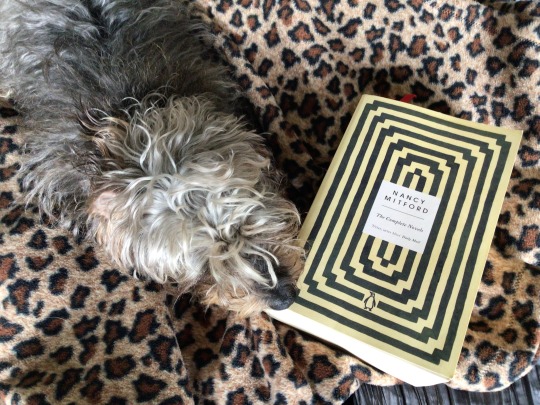
FOR BOOK GROUP
THIS MONTH TWO OF OUR MEMBERS ARE STILL READING FEBRUARY’S BOOK
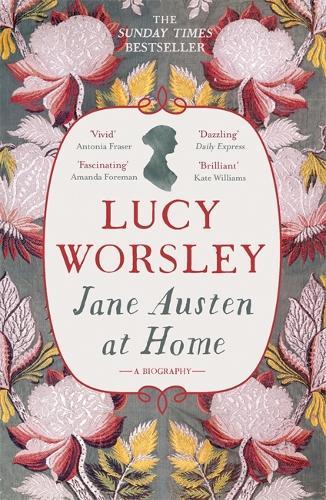
https://www.waterstones.com/book/jane-austen-at-home/lucy-worsley/9781473632202
‘ … STILL CATCHING UP … ‘
BUT ONE OF THEM IS STARTING THE PREQUEL TO MARCH’S BOOK
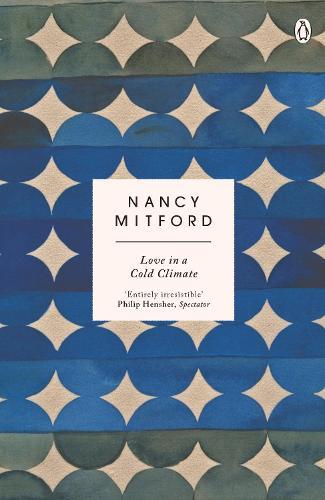
https://www.waterstones.com/book/love-in-a-cold-climate/nancy-mitford/alan-cumming/9780241974698
‘ … SOME OF THE SAME CHARACTERS.’
…
PLUS
OTHER MEMBERS HAVE ALSO READ (OR ARE READING) …
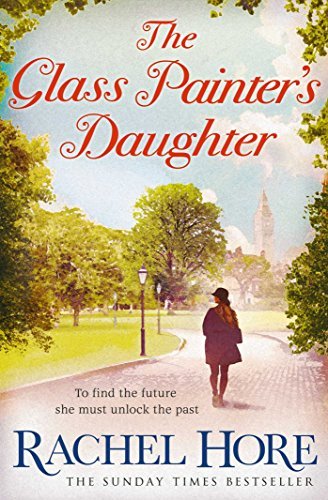
https://www.waterstones.com/book/the-glass-painters-daughter/rachel-hore/9781471151880
‘ … EXPLORES RELATIONSHIPS AND THE SKILLS INVOLVED IN GLASS WINDOW MAKING … NOT YET SURE WHAT THE OVERALL MESSAGE IS.’
…
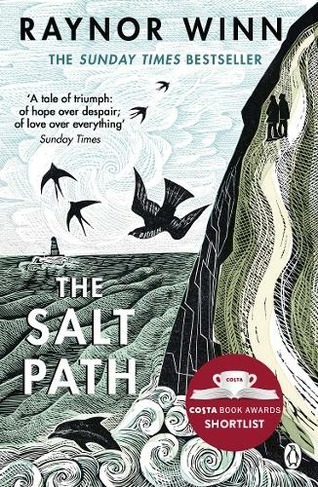
https://www.waterstones.com/book/the-salt-path/raynor-winn/9781405937184
‘I’VE READ IT BEFORE AND I THINK IT’S A VERY POWERFUL BOOK … COUPLE WERE MADE HOMELESS … DECIDED TO WALK THE SOUTH WEST COASTAL PATH … ‘
…
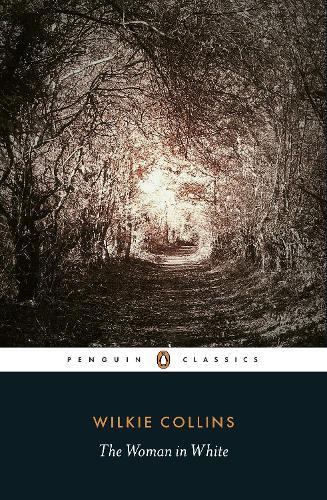
https://www.waterstones.com/book/the-woman-in-white/wilkie-collins/matthew-sweet/9780141439617
‘MY SLOW BURN EARLY MORNING CLASSIC’
… OUR TOP MEMBER

https://en.wikipedia.org/wiki/The_Cadfael_Chronicles
‘ … LOVE THESE AND RE-READ FREQUENTLY … ‘
&
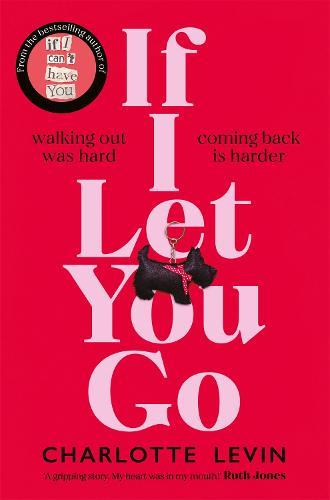
https://www.waterstones.com/book/if-i-let-you-go/charlotte-levin/9781529084115
‘READABLE AND THOUGHT PROVOKING.’
&
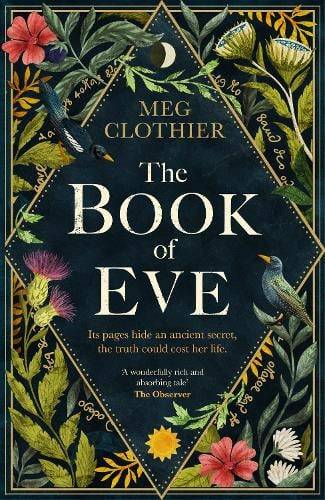
https://www.waterstones.com/book/the-book-of-eve/meg-clothier/9781472276087
‘RATHER WEIRD’
&
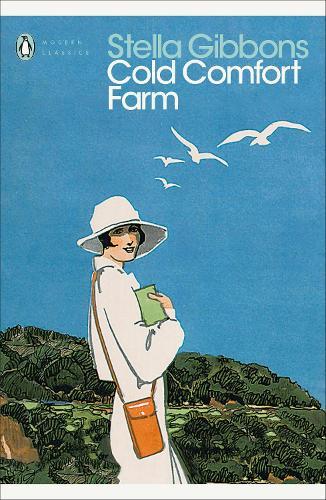
https://www.waterstones.com/book/cold-comfort-farm/stella-gibbons/lynne-truss/9780241418895
‘‘DEFINITELY WEIRD!’
&
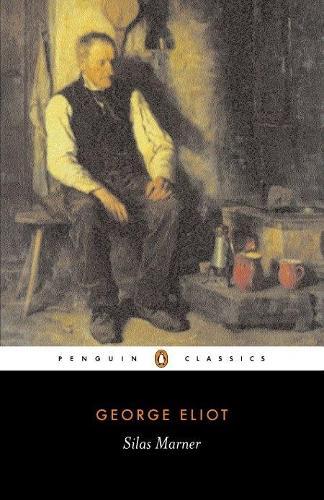
https://www.waterstones.com/book/silas-marner/george-eliot/david-carroll/9780141439754
‘ … SHE DOES NOT DISAPPOINT.’ &
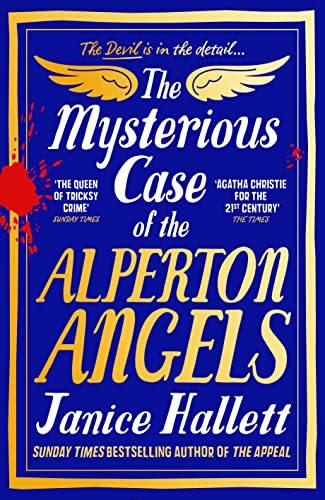
https://www.waterstones.com/book/the-mysterious-case-of-the-alperton-angels/janice-hallett/9781800816435
‘VERY READABLE AND QUITE GRIPPING.’
&
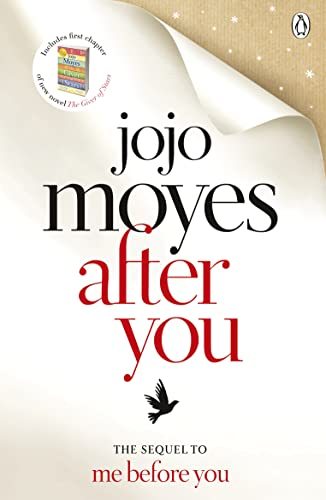
https://www.waterstones.com/book/after-you/jojo-moyes/9781405909075
‘THE SEQUEL TO ME BEFORE YOU WHICH I ENJOYED. I AM ENJOYING THIS ONE TOO.’
…
OUR LEADER
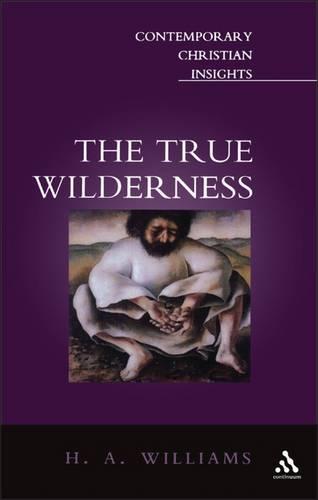

https://www.waterstones.com/book/true-wilderness/the-rev-h-a-williams-cr/9780826464590
‘ … A BOOK ON THEOLOGY, WRITTEN IN THE SIXTIES AND FAIRLY RADICAL.’ &
https://biblio.co.uk/book/staircase-silence-ecclestone-alan/d/786476403
‘ … ABOUT A NINETEENTH CENTURY FRENCH POET AND THEOLOGIAN WHO WROTE ABOUT THE IMPORTANCE OF SILENCE. INTERESTING BUT HARD GOING.’
*****
BOOK GROUP 2023
JANUARY - JODI PICOULT - ‘WISH YOU WERE HERE’
https://quoteoftheweekblog.tumblr.com/post/707162386989219840/quote-of-the-week-23123-jodi-picoult-and FEBRUARY - LUCY WORSLEY - ‘JANE AUSTEN AT HOME - A BIOGRAPHY’
https://quoteoftheweekblog.tumblr.com/post/709807520542277632/quote-of-the-week-20223-lucy-worsley-there
MARCH - NANCY MITFORD - 'THE PURSUIT OF LOVE’
https://quoteoftheweekblog.tumblr.com/post/712878877446373376/quote-of-the-week-27323-nancy-mitford
APRIL - FRANCES HODGSON BURNETT - 'THE SECRET GARDEN’ MAY - EDITH WHARTON - 'THE HOUSE OF MIRTH’ JUNE - TRACEY CHEVALIER - 'A SINGLE THREAD’ JULY - E.M. FORSTER - 'A ROOM WITH A VIEW’ AUGUST - DAMON GALGUT - 'THE PROMISE’ SEPTEMBER - ALEXANDER MCCALL SMITH - 'THE HOUSE OF UNEXPECTED SISTERS’ OCTOBER - ARAVIND ADIGA - 'SELECTION DAY’ NOVEMBER - BONNIE GARMUS - 'LESSONS IN CHEMISTRY’ DECEMBER - JULES VERNE - 'AROUND THE WORLD IN EIGHTY DAYS’
*****
AND THIS IS WHAT WE READ EARLIER
https://quoteoftheweekblog.tumblr.com/bookgroup
*****
NANCY MITFORD
https://quoteoftheweekblog.tumblr.com/post/30954102908/quote-of-the-week-3912-nancy-mitford-oh
*****
QUOTE OF THE WEEK 2011 - 2023 11 EPIC YEARS
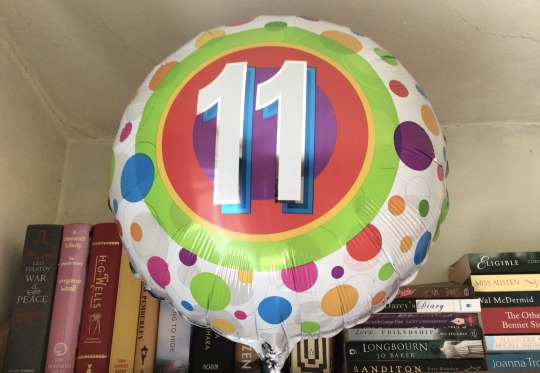
https://quoteoftheweekblog.tumblr.com/references FROM THE ARCHIVE
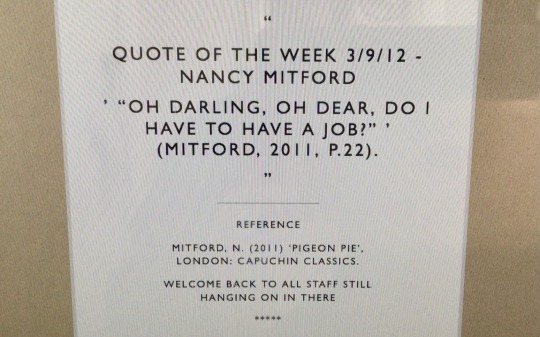
https://quoteoftheweekblog.tumblr.com/post/30954102908/quote-of-the-week-3912-nancy-mitford-oh
*****
1 note
·
View note
Photo

p.s. i—
frank’s letters get returned to sender.
a kastle christmas fic. for frosty friday: longing, surprise reunions.
also on ao3.
The first one Frank sends almost by accident.
He’s been on the road. Driving if only to keep one horizon ahead of him, and the other in his rearview mirror. He stops for gas, and for coffee. Some nights he doesn’t even bother with a motel to sleep off the long day’s drive; the air is cold but not always unbearably so, for December, and from the cargo bed of his pickup, he has full view of the stars.
He’d almost forgotten what they looked like, having lived in the city so long.
He’s sitting at a roadside diner, making his way through some bacon and eggs when something catches his eye on the counter. It’s a spinning display of holiday postcards, most of them nothing to write home about. But Frank finds himself picking up a card of the northern constellations, the ones expected to show around Christmas – which, again, not likely from the city.
He’s scrawled out Karen’s address on the back before he’s even aware of asking the waitress for a pen.
He doesn’t write a note. Doesn’t even sign his name, including the one the government gave him.
Somehow, he thinks she’ll understand.
…
After that, it becomes something of a habit.
He starts with short messages – a simple Hey from the Smokies, it’s me, and an equally brief Hope you’re well while he’s hiking through the Blue Ridge Mountains.
The first few words are the hardest, but once he’s gotten them down it’s like a dam has been broken. Then it becomes almost terrifyingly easy, like it would defy some law of physics not to keep going. To stay connected to her in these small ways.
Think you would like this, he writes when he finds himself driving past Edith Wharton’s estate up along Massachusetts' west border. He’s not familiar with her work, but he’s seen some of her novels on Karen’s shelf before.
He keeps driving for a while, not ready to turn back just yet. Herman Melville’s place is not much farther north. Overrated, Frank writes on the back of that postcard.
Even when he returns to the city, he can’t seem to stop.
Instead of postcards, now, it’s letters. Short ones, still, for the most part. Telling her about a new coffee shop he found, one that hasn’t been overrun by the hipsters. When he gets a job as a foreman, he writes her about that too.
He never signs his name. But he does start leaving a return address. The place he’s just moved to is a walk-up in Brooklyn, in a quiet little neighborhood with a dog park down the street. He takes the paper there in the mornings, finds himself scanning the local crime pages. The headlines start running together after a while, but they’re not the real reason he’s looking.
He leaves that part out when he writes her.
Two weeks after he’s moved, tucked between ads and an internet bill, there’s a letter.
He pulls it free, the inside of his chest going tight. Karen’s name is written there, in his handwriting. A bright red RETURN TO SENDER has been stamped into the corner of the envelope.
He has no way of knowing when she moved, or how long she hasn’t been getting his letters. His postcards, even. If she’s received any of them at all. Most of them didn’t have an address to bounce back to, a place where he’s finally stood still, until now.
…
They keep coming back to him, one after another.
He thinks about calling her, but it’s vastly more daunting than sending that first handful of postcards had been. He thinks of everything he’s written her – all the things he’s said without saying – and the prospect of trying to voice them aloud in a phone call is enough to have him hanging up before he’s finished dialing her number.
The letters pile up on his counter, wrinkled through and creased at the corners, their seals all worn apart. Frank doesn’t want to imagine how carelessly they must have been handled. Worse – he doesn’t want to imagine anyone else reading these words he’d written for Karen, discarding them where they might’ve meant something to her.
But he does, and it eats at him, making that ache in chest crack wider each time another letter gets returned.
If he’s doing this, then he’s doing this right. Karen deserves to hear everything he has to say face-to-face. She deserves the chance to close her door on him, too, if that’s what she decides she wants.
And Frank – what Frank wants is—
…
He’s waiting to hear back from Lieberman when he gets the last letter he’d sent her.
He tries to remember what he’d written. He’d been at the coffee place that day, reading The Age of Innocence. The barista had made some remark about how he fit right in, the black coffee and flannel, the beard and the unusual choice in books. Frank had taken none of this lightly, and expressed as much in his letter, stopping short of what he really wanted to say to her – You should be here. With me.
I—
He picks up the envelope. This seal’s broken too, but he’s come to expect that. This one looks particularly weathered, like it’s been through hell and back. Not exactly a stretch, considering where her old neighborhood had been. Frank checks his phone again, in case Lieberman’s called with an update. He hasn’t. Frank thumbs open the letter, sliding it free.
A single white rose petal falls out.
Frank stares at it for a long moment. Feels its softness, the delicacy of its contours that haven’t been fully pressed out by the letter. It’s still fresh, not quite browned at the edges. Fragrant. Almost dewy to the touch. It can’t have been sent back to him more than a couple days ago.
And it can’t have been anyone other than Karen.
He piles everything together, touching each one with a new kind of wonder. All those letters, all the words that he wrote her – she’d read them. More than that, she’d read in between them. Into the space where he’s trying to settle, into the life that he’s slowly finding a way to rebuild.
And now, he thinks, she’s asking him to finally, finally, make them mean something real.
Frank’s bundling the letters into his jacket when he gets the call from Lieberman. He lets it go to voicemail.
He knows where he’s going, now.
…
Her place is exactly as he’d remembered it.
Even the doorman’s the same. Frank pulls back his hood and lifts a brown paper bag as he passes. The doorman waves him through, hardly glancing up from his computer.
Karen’s still in her work clothes when she opens the door. Another black skirt, a soft cream-colored blouse. She’s wearing black tights this time, a concession to the colder weather. She’s already toed off her heels, but then, Frank’s oddly used to seeing her barefoot by now.
“Frank.” She looks at him, and there’s a soft kind of knowing in the way she leans into the doorframe. “I take it you got my message.”
“Took me longer than it should’ve,” Frank admits. He sways forward a step. “You’ve been getting my letters.”
“Yes,” she says simply. “And I’d like them back now, please, if you have them.”
He pulls the stack of them out of his jacket. “What’d you do, bribe your mailman or something?”
“Not exactly.” There’s a twinkling kind of light in her eyes. Frank feels like he’s in the back of his pickup again, looking at the stars. “I helped him out once. He owed me a favor.”
She takes the letters, tucking them against her arm. Holding them closer than Frank feels he deserves, but he’s not about to ask her to stop. Not now. Not ever. Not anymore.
“I can tell you about it sometime,” she says. “If you want.”
“Yeah?” Frank raises the bag in his hand, beer bottles clinking. This part feels familiar, too, and yet so very, terrifyingly new. Like both nothing and everything’s changed, all at once. “Is, uh. Is now good for you?”
Karen bites her lip, the corner of it lifting up in a smile. “I’d say it’s about time, Frank,” she says, and nudges her hip into the door, letting him inside.
#kastle#kastle ff#kastlenetwork#kastlechristmas#kastlechristmas2k21#this one is short and sweet#happy holidays kastle fam!
98 notes
·
View notes
Note
♥️🌌 15, 17, 19, 85 🌠♥️
🚂🚃 asks
15. Is there a song, book, movie, or other piece of media that has drastically altered your life? What was it, are there multiple?
There are multiple, yes. *cracks knuckles*
Novels:
1. The House of Mirth by Edith Wharton.
I will never be able to explain what this book means to me. It's a fabulous, ineffable feeling that no other piece of media has ever made me feel. I'm so different from Lily Bart, and yet i find her so relatable, so easy to understand. Her incapacity to reconcile two conflicting ideas, her lack of drive, her lack of self-worth beyond being a beautiful vessel; how her mother's influence has shaped her ideals, how Selden challenges them and why that appeals her so much. The world Lily's mother built for her is crumbling, and she's helpless. She's her own worst enemy.
I had to microdose this novel because it made my heart physically ache. I knew from the start she was doomed, and at the end i cried for her, and i cried for myself fearing i will suffer the same fate.
2. Notre Dame de Paris.
A shallow reading of this novel won't make it justice. The Disney movie is like: the monster is actually human / the human is actually a monster yadda yadda yadda, boring (still a good movie tho). The book doesn’t have such a stale dichotomy. Claude Frollo is terrifyingly human and terrifyingly well portrayed. I remember getting goose bumps when i read the boat scene in which Frollo —like Charon ferrying the souls of the dead across the waters of Hades— ferries Esmeralda to the other side of the shore, where he (also as the role of judge) will decide her final sentence.
3. Of Human Bondage.
The movie does not do justice to the book. Yes, Bette's performance ✨️talented, brilliant, incredible, amazing, show stopping, spectacular, never the same, totally unique, completely not ever been done before✨️, etc. But the book is better. In the novel Philip himself is incapable of understanding why he's so frightfully in love with Mildred, he's in a constant struggle to get over it. He hates Mildred, he desperately loves her, he hates himself for loving her. *Insert ouroboros encircling Cupid: love is self devouring here*. And Mildred...well, I can't figure her out, she confuses me. In the movie (as with Frollo) she is just plain bad. But in the book she's a constant ????? she's petty, she's mean and manipulative, but she is also capable of being incredibly naive, of giving in to passionate impulses and of feeling compassion. I think Mildred is far more stupid than evil, which once again makes her more human.
Poetry:
Devotions.
Mary oliver was right: You only have to let the soft animal of your body love what it loves.
Completely changed my view of the world and shaped me into the person that i am today.
Shows:
The x Files.
I have nothing to say that hasn't already been said by the x files meta writers on this app.
Movies:
The Sound of Music.
It somehow feels like a movie adaptation of Mary Oliver's poetry. 174 minutes of pure joy.
17. What's the most interesting coincidence you've had happen to you (or someone you know)?
Sorry to disappoint you querida but i have no idea.
Many interesting coincidences have happened to me! almost all of them related to coincidentally meeting a key person in my life.
19. In general, is there any historical event you desperately want to witness?
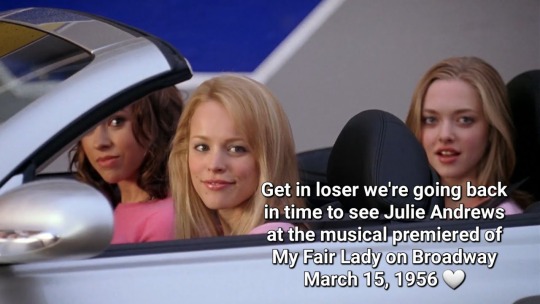
85. What memories would describe as your "core" ones?
My mom clumsily playing videogames just for the sake of spending time with me. My dad sleepily reading Donald Duck comics to me at night and me asking him to not fell asleep and to go on, go on! bc i was a such a restless, full of life child and couldn't understand how the people around me was so drained. My childhood summers. ABBA on the car radio while travelling. The first time my cat looked at me with his big baby blue eyes. Meeting you. My last year of highschool which was the only one good.
100 questions to talk about on the late night train at 11:04 pm
7 notes
·
View notes
Photo

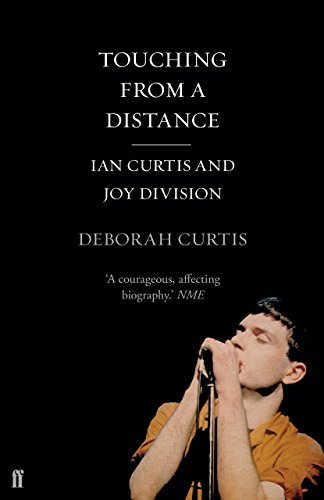

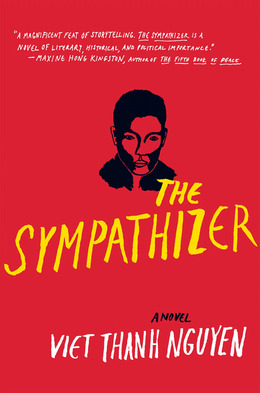


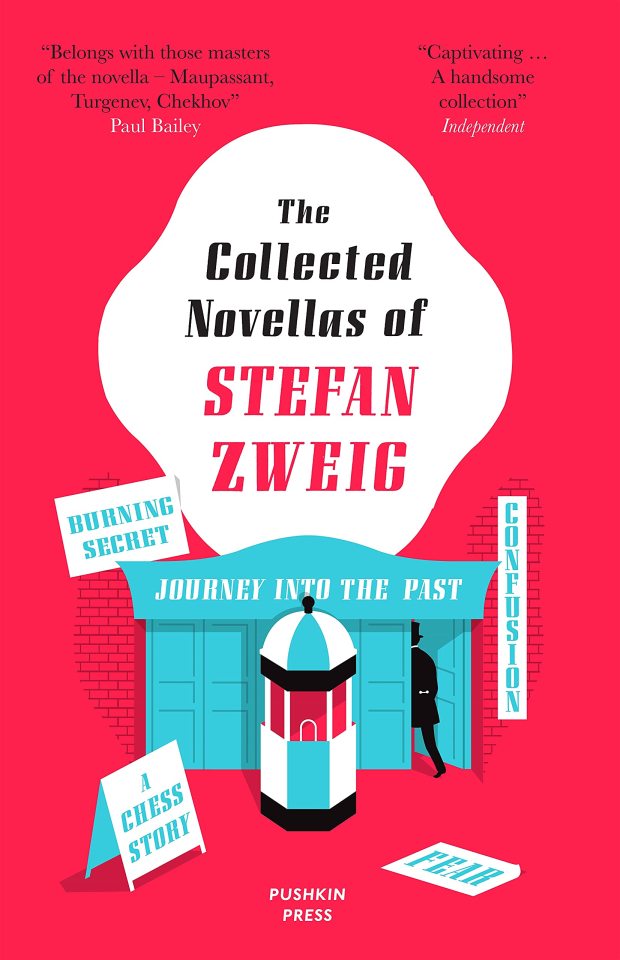
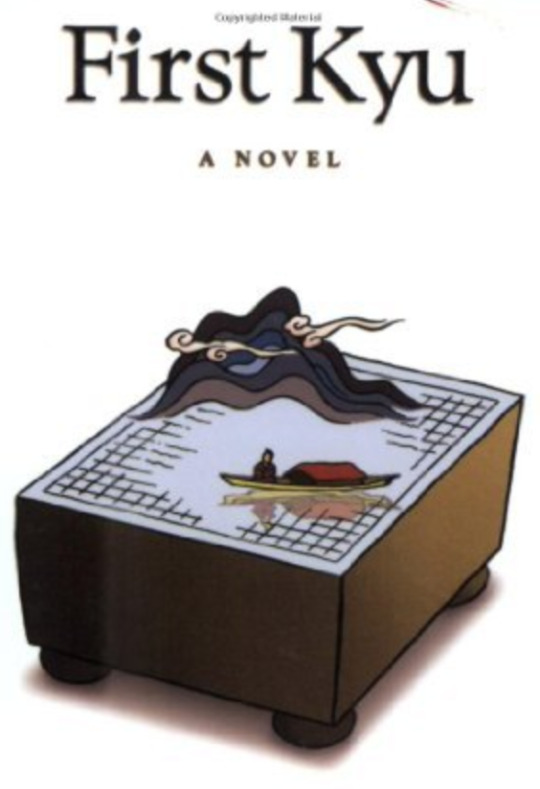
2021 in review - my fave books I read this year:
[you can find my 2020 roundup here]
1. Substance: Inside New Order, by Peter Hook + 2. Touching from a Distance, by Deborah Curtis
Okay, let me make you a pitch for reading these 2 books, plus 2 that didn’t quite make the list but that I think about CONSTANTLY (Chapter and Verse, by Bernard Sumner and Record Play Pause: Confessions of a Post-Punk Percussionist by Stephen Morris).
I love their music, but what really fuels my weird obsession is that like, New Order/Joy Division is some sort of experimental literature DREAM. They have not one but TWO movies made about them. Each of the three surviving members of JD have written autobiographies. Ian Curtis’s widow, Deborah, also wrote her own memoir. So you have 4 competing and often contradictory (!) descriptions of the exact same events.
It’s like Rashomon but like, with real, actual people, and because they’re real people they are infinitely bizarre and interesting and complicated. Read alltogether, I’d say the 4 autobriographies are an incredible portrait of loneliness, they’re 4 portraits of people whose lives are so intertwined, yet they can’t connect. incredible
3. Craft in the Real World, by Matthew Salesses
I like this book on writing because Salesses acknowledges the difference between western/asian storytelling, and also because he offers some very good tips for plot. Move events from the past to the present. Visualise the contents of a single written page. Create a ticking time bomb.
4. The Sympathizer, by Viet Thanh Nguyen
The prose...the prose! So dense but chewy and flagrantly anti-skimmable. I’m in a book club for this and every time we rave about how good Nguyen’s sentences are. Also, I always have a soft spot for grimy 1970s spy shit. The Commited, the sequel set in Paris, is also fantastic because it’s so specifically merciless against the French intellectual bourgeoise, which I find hilarious
5. I’m Not With the Band, by Sylvia Patterson
Part of my ongoing fascination with 80s-90s music. It’s so good for journalism nerds as well, I find Patterson’s writing just so breezy and readable. And of course the various little snapshots into 90s music personalities like Kylie Minogue and the Manic Street Preacher lads and the members of Blur-- *chef’s kiss*
“I was always hopeless at drugs. I was never psychologically robust enough for drugs, and yet I persevered like a stoic climber with one leg, no arms and spinal tuberculosis up a vertical Alpine precipice. Growing through teenhood in Scotland in the early 1980s there was no escape from drugs, permanently present in the local post-punk whirligig.”
6. White Ivy, Susie Yang
Ok in 2021 I actually found myself drifting away from “literary” fiction into “mass market” fiction (ACTUALLY THESE DISTINCTIONS ARE DUMB BUT LMAO). Anyways, I think the synopsis definitely missed the point of the book, and it tried to make it a Gillian Flynn grifter-narrative when really it’s influenced so much by Edith Wharton and society novels. It’s about a Chinese-American girl trying to marry her way into a rich, WASP family. I’d say that half of the novel set my mind on fire, and the other half was a slog that desperately needs a good edit. Overall, excellent read. The world needs more Asian-American protagonists who are incompetant idiots <3
7. The Collected Novellas, by Stefan Zweig
So Zweig is the author referenced at the beginning of Grand Budapest Hotel. He’s fantastic. Half of these novellas have one (1) premise, which is, “what if you’re on a boat and another dude was on the boat and then this dude tells you the fucking bonkers shit that ever happened to anyone ever”. But seriously, after reading a lot of contemporary fiction with “flat” emotional affects (think of those millenial pink Instagram novels with garish blobs, etc), reading an early 20th c realist narrative where emotions and interior journeys are taken really, really seriously feels so refreshing. I read it and immediately summarised the plot of every single one to my partner, just because they’re so fun to talk about.
8. First Kyu, by Dr. Sung-Hwa Hong
First Kyu is about Go. It’s about a guy who is so obsessed with becoming a professional Go player that it takes over his life. It’s such a good portrait of post-WW2 Korea and that specific generation of men, it’s a reflection on Go but also on philsophy and religion and family relationships. It’s about a guy who plays a lot of board games and sleeps with a bunch of woman, and it rocks.
It’s written by a non-professional writer and Go enthusiast (I believe Hong was a dentist in Vancouver), but it’s one of those stories where the characters are so sincere, and the plot is so exciting, that the quality of the writing really does not matter. It doesn’t. The sheer burning urgency of the story shines through regardless. I put it on here because I found it a lot more interesting than writing that’s more technically sophisticated, but also more stifled and primped by a million MFA workshops. I think it’s a good reminder that what really matters in art is telling a good story. Not crafting a beautiful sentence. Just tell a good story. That’s what connects with people. Beautiful sentences are nice, but the story is what sticks.
16 notes
·
View notes
Text
Mid Year Book Freak Out Tag
I wasn’t sure whether I was going to actively post on this blog anymore - mainly as it’s become a record of what I’ve read and my basic thoughts on the books. I do have several other places to do this (which are much less public) through my reading journal and goodreads. However, I’m still in two minds so I thought this would be fun for me to do whilst I decide whether to write up my thoughts on June’s reading.
Best Book of the Year So Far...
Beren and Luthien by J.R.R. Tolkien (ed. Christopher Tolkien) was so beautiful that it couldn’t be any other novel. I think about this book all the time, particularly the Lay of Leithian, largely for the language and poetry in it. This is Tolkien at his best in terms of language, writing style(s), and imagery - I cannot stop picking it up and reading sections of it at random because it’s been on my mind for months now. I’m infatuated with it and I’m not entirely sure why... Honestly, for this book to take a section of The Silmarillion I (was) largely indifferent to and turn it into my favourite tale from the First Age is an astounding achievement!
Best Sequel of the Year So Far...
Wyrd Sisters by Terry Pratchett (6th Discworld novel). This has changed with my July reading, however, this book was phenominal, and I’m trying not to answer Robin Hobb for everything.
A New Realse I Need to Read...
I’ve actually read all the new releases I was anticipating for the first half of the year, for the first time ever! So I suppose it has to be Royal Assassin in the Illustrated Special Edition as I haven’t read this copy yet and want to...
Most Anticipated Release for the Second Half of the Year...
Rhythm of War by Brandon Sanderson, do I need to justify this?!
Biggest Disappointment...
Persuasion by Jane Austen. (This was rough... and I’m still mad about it)
Biggest Surprise...
Nevermoor: the Trials of Morrigan Crow by Jessica Townsend
Favourite New Author...
I haven’t read a lot of new (or new to me authors) and I usually need to read multiple books by an author before I declare them a favourite. But, the closest I have are Anne Bronte and Guy Gavriel Kay as both have promised AMAZING things with the books I’ve read from them this year.
However, I do have a new favourite editior - Christopher Tolkien, thanks to the brilliant ‘Great Tales’ he put together from J.R.R.T.’s notes. The three books are, or at least my enjoyment was, improved by his commentaries and notes on his father’s work! I was blown away by how good they were!
New Fictional Crush...
None? I don’t do fictional crushes.
New Favourite Character...
This is a toss up between any of Terry Pratchett’s Witches - Granny Weatherwax, Nanny Ogg, and Magrat Garlick. Any and all of these wonderful women could take this spot and it really just depends on my mood which one of them I love more!
A Book That Made You Cry...
Fool’s Errand by Robin Hobb... I can still cry over this one six months later just by thinking about that ending...
A Book That Made You Happy...
Reticence by Gail Carriger. The cameos! The romance! The drama! I loved this book so much that I actively squealed at it several times... Not my most dignified moment!
The Most Beautiful Book You Read this Year...
Assassin’s Apprentice (illustrated edition)
A Book You Need to Read Before the End of the Year...
The House of Mirth by Edith Wharton (I’ve started it twice this year and been distracted away from it despite enjoying what I’ve read so far... What is wrong with me?!)
#mid year book freak out tag#books of 2020#j.r.r. tolkien#christopher tolkien#beren and luthien#terry pratchett#discworld#wyrd sisters#robin hobb#realm of the elderlings#rote#royal assassin#assassins apprentice#fools errand#brandon sanderson#stormlight archive#rhythm of war#jane austen#persusasion#jessica townsend#Nevermoor: The Trials of Morrigan Crow#nevermoor#anne bronte#the tenant of wildfell hall#guy gavriel kay#gail carriger#parasolverse#the custard protocol#reticence#edith wharton
3 notes
·
View notes
Text
Revisiting Wharton’s Tragedies 🥀
I was in the seventh grade when I embarked on a journey to become a “cultured” reader, whose defining characteristic, I presumed, was a conversance in classic literature. The desire to enter the elite literary world of Charles Dickens and Jane Austen resulted in my eventual encounters with Whartonian literature - specifically her two significant works, The Age of Innocence and The House of Mirth. Over winter break, I reread the novels, so it is my intention to analyze the books from a new perspective while considering the meditations I had approximately six years ago. I can immediately acknowledge that the titles are both exemplary, though endeavoring to decide which one is superior is a challenge that I respectfully demur. Instead, I want to juxtapose them in a way that does not diminish their individual significance or merit; they both have a separate majesty that I hope to examine.
Innocence is the easier read, and that could be a contributor to its higher placement on lists that rank American classics. When I say “easier,” I do not mean that its language is more lucid - both works, though complex in vernacular, are quite comprehensible. What I want to articulate in the usage of that word is the gentleness of its conclusion. It is incontestable that Innocence’s unhappy ending is easier to endure. In it, lawyer Newland Archer - engaged then married to darling debutante May Welland - falls in love with May’s cousin, individualist Ellen Olenska and begins a passionate affair with the latter. Due to familial obligation and honor, however, the couple ends their relationship; though, it is more accurate to state their relationship is ended for them. The ending acts as a palliative, assuaging the heartbreak experienced by readers who hoped for the adulterous lovers by having Newland realize that an elderly reunion with Ellen after May’s pneumonic death is unnecessary because his memories keep their star-crossed dalliance alive and well. Regardless, my seventh-grade self resisted the resolution. Unlike the protagonist, I could not subsist on romantic recollections, so I faintly recall being an emotional wreck after I completed the book. As a 19-year-old, my vision has altered, especially when considering the conclusion of Mirth, wherein the protagonist, Lily Bart, accidentally overdoses on sleeping medication before her true love, Lawrence Selden, saunters to her dilapidated boardinghouse the following morning with a marriage proposal. Mirth is the truer tragedy, though the ending of Innocence still inspires my melancholy. To summarize in medical analogy, Innocence’s injury is a bruise - causing great discomfort but not requiring a prolonged recovery - and Mirth’s injury is a wound - creating a deeper, more lingering pain and mandating an extended path to normalcy.
What I enjoy about both novels is the elegance of expression and delicious detailing. The qualities evince Wharton’s aristocratic upbringing, proving her frequent overseas traveling and centrality in a sumptuous scene. Innocence, though focused on a male character, retains the fastidiousness of Mirth. For example, the clothing worn by different characters is meticulously elaborated: the stylish stores from which they came are identified, fashion designers who produced them are referenced, and the materials of which they are constituted are mentioned. In Innocence, as in Mirth, style is celebrated, though the former has a greater focus on it. The latter, with international travel playing a more significant role in the storyline, appears more dedicated to saluting scenery. Another reason for such an emphasis on environment is Lily’s protagonism. Her personality - being, simultaneously, a sybarite and an aesthete - accommodates such intense illustration of setting. Also, the language of both books, intelligent but not pedantic, increases their charm. Wharton’s refined diction - almost epic but retaining realism - makes reading a pleasure and nearly glorifies a world that proves detrimental to its inhabitants. While immersed in the pretty prose, a character’s most trivial task casts an aureate glow, yet the ornamentation reinforces the loveliness of Innocence and Mirth.
In reviewing the characters, I developed a love-hate relationship and engaged in brutal juxtaposition. I admired Newland for his disillusionment with society - or, the more accurate descriptor, “social system” - and for, quite literally, following his passion - as contrasted with Selden’s vexatious passivity. However, I abhorred his constant committing of adultery - with Ellen and with an earlier lover that I missed in my seventh-grade reading. His decision to stay with May to raise a family and restore his remnant honor was respectable, but strangely enough, I still find myself dissatisfied with it. Moreover, I revered Ellen’s freedom but disliked her cousinly betrayal. As for Lily, I identified with her love of luxury and appreciation of beauty but winced at every demonstration of the improvidence that expedited her descent. I can acknowledge that May played an interesting antagonist to Newland and Ellen’s love because her innocence belied the manipulativeness that she was capable of and that Bertha Dorset - a malicious female character whose misdeeds prompt Lily’s expulsion from society in Mirth - is an excellent villainess. Whatever ambivalence I felt about the characters fails to affect my veneration for the titles; my vacillation actually proves Wharton’s literary virtuosity because it shows that she succeeded in complex characterization.
A motif that recurs in the narratives, of which I was initially oblivious, is flowers. Numerous examples in Innocence and Mirth corroborate Wharton’s floral obsession. In the former, characters decorate their expensive garments with flowers - the peeking of a gardenia from a gown, for instance - and lilies of the valley bring fresh fragrance to their mansions. The opera scene - significant in that Newland sees it as a reflection of his departure from Ellen - features an actress plucking petals as she performs a classic daisy oracle. Wharton’s usage of “efflorescent” presents another demonstration of floral fixation. Most importantly, Newland sends yellow roses to Ellen, whose bravery and brilliance, he believes, is symbolized by them. The prevalence of flowers continues in Mirth, wherein Lily is named after one as well as Simon Rosedale, a Jewish financier obsessed with social ascent. Lily’s movement is compared to a flower, and she even laments the lack of fresh ones during a familial luncheon. Finally, Lily and Selden’s first kiss occurs in a garden felicitously encircled by lilies. Perhaps Wharton’s focus on flowers followed her constant exposure to beauty: she traveled extensively and experienced the elegance expected of an aristocrat, so maybe flowers are representative of that beauty. On the other hand, flowers are fragile and can be connected to the fragility found in the two tragedies. As flowers eventually fade and die, so do Newland and Ellen’s romance as well as Lily’s social prominence and her actual life. I think these interpretations elevate the novels because they correspond to the theme of pretty things - debutantes, designer clothing, love affairs, luxurious lifestyles, etcetera - being vulnerable to destruction.
I am curious as to when I will read Innocence and Mirth for the third time, though I suspect that a couple years will pass since I want to review them with new eyes in order to espy new insights. If I have not made it apparent, I want to re-emphasize my adoration of the books, whose irresistible unhappy endings make me a kind of literary masochist. As a bibliophile, I am always on the search for another magnificent novel and in pursuit of the ecstasy that a phenomenal book can ignite, but which books will match the power of Innocence and Mirth? It is rare for a piece of literature to activate emotions, convey beautiful or original sentiments, and be worthy of deep dives, but Wharton accomplished all of that with her works. Until I discover another title that achieves those same elements, I imagine I will be chasing the ironic high that Wharton’s beautiful tragedies generate.
#the age of innocence#the house of mirth#edith wharton#books#essay#ziary#classics#society#beautiful tragedy#culture#fiction
6 notes
·
View notes
Text
Writer’s Questionnaire
Tagged by @gingerbreton - thank you, darlin
short stories, novels, or poems? I like short things mostly. I have a short attention span. And I love the idea of fitting a lot of depth and meaning into a small package.
what genre do you prefer reading? Speculative fiction in general is a big one obvi - fantasy, horror, and dystopian lit specifically. Love me some magical realism as well. I will always dig wry social commentary - Jane Austen, Edith Wharton, Mark Twain etc.
*coughs* also true crime *coughs*
what genre do you prefer writing? Definitely fantasy. I’m big on the kind of understated character-driven fantasy that doesn’t focus that heavily on mechanics because I’m too dumb to put that much attention into detail. I like lore. And I really enjoy writing horror, but that’s more taxing, I think.
Are you a planner or a write-as-I-go kind of person? FFfff I’ve never planned anything in my life. I’m starting to put more effort into knowing where I’m going, but I don’t want to sacrifice that “oh that’s the story” feeling when it all comes together.
what music do you listen to while writing? I’m very easily distracted and sensitive to shifts in mood, so usually no music. Occasionally I’ll put on something that I think really suits the tone of what I’m writing, but usually I’ll put on some white noise or something if I need to block out my environment.
fave books/movies? For books: Margaret Atwood (the MaddAddam series ahghghh), Kurt Vonnegut, Octavia Butler, Graham Green, Neil Gaiman, Terry Pratchett (Good Omens!) - Susanna Clark? Jonathan Strange & Mr. Norrell is one of my favorites, and it makes my heart sad that she’s apparently somewhat inactive now. Also Anne Rice was formative, though I don’t read much of her anymore
For movies: Eternal Sunshine, 28 Days Later, The Piano, almost all the Coen brothers’ catalog, The Blues Brothers, Galaxy Quest, About a Boy - I would go see every shitty horror movie if I had the time/money to do so
any current WIPs? Only like 10. I have two unfinished chaptered fics, one Fenhawke and one Inquisitor/Cassandra, a more involved Inquisition long fic and another Fenhawke long fic in the works, then I’ve got quite a few one-shots hanging out in the ol drafts
That’s only for fandom. I have a fantasy thing and a horror thing I’m writing outside of that. I haven’t written poetry for a while, but I’ll get back to it someday.
if someone were to make a cartoon out of you, what would your standard outfit be? Black jeans, a very old black tee shirt for this shitty psychobilly band (it’s a cool shirt though), pink sneakers, jean jacket
create a character description for yourself? She’s disarmingly awkward, gangly and quick with a laugh. Distinct sense of style, yet chronically unkept. Polite but direct.
do you like incorporating people you actually know into your writing? Oh yeah. I wouldn’t say I have any characters that are completely based on people I know, but I do take inspiration from them. I consulted a friend who has been in a bunch of fights as research for that Carver-takes-his-shirt off fic.
are you kill-happy with characters? No! I’ll hurt em real bad, but killing them seems a waste. It’d have to feel right,
coffee or tea while writing? I like tea, but coffee all day
slow or fast writer? Sloooowwww
where/who/what do you find inspiration from? Often music. I don’t listen while I’m writing, but I usually take a long walk with my earbuds a few times a week and daydream. It’s pretty effective
if you were put into a fantasy world, what would you be? Probably like a nun? Not because I have any religious conviction, but it seems chill. Maybe a druid or something, but I doubt I’d be magical.
most favourite book cliche? least fave book cliche? I really like found family power of friendship shit. YEeeah yeah that’s my shit.
Not big on Chosen One narratives. I find that pretty boring.
fave scenes to write? Dialogue, dialogue. I like arguments, heavy discussions, flirting, group banter. I love dialogue
most productive time of day for writing? I don’t have a particular time of day. I write the best when I’m supposed to be doing something else tbh
reason for writing? I’m always kind of daydreaming stories anyway. Might as well write em down.
Tagging @dirthara-mama @will-and-her-fandoms @dickeybbqpit @sulevinblade @fen-harel (if you feel like it)
6 notes
·
View notes
Text
Diaries, Greece
I. Hydra, 2019
It was so unlike her. She kept comparing her hand to the Iranian of our group and would burst out of restaurants with pride when the waiter or waitress asked if they were siblings. He was too short to be her boyfriend but their chemistry wasn’t that far off; so I suppose sibling was the default between this six-foot blonde thing and this five-foot-and-some-negligible-inches boy. I must admit that she was quite dark.
So I sat there and I stared at her and thought how unlike her this whole thing is. We would roast for hours and hours, drifting in and out of sleep but never drifting out of the brutality of the sun upon on our skin. My mother was always terribly afraid that I would do this. I still can’t spend a day in Montauk without thinking of that shiver that would run up my spine as the aerosol hit my back. And the smell. I screamed like a child – I suppose I was a child – and cursed her. Yet here I am; staring at someone who reminds me so much of my mother and wondering why she, or any of us, really, would do this. She took calculated risks. She had a trust fund, I’m sure, but had already started contributing to her retirement the second that she could. I remember the shock with which she broached the fact that I had yet to begin planning for my own and, after convincing me that she must know my social security number – “the last secret between us” – it became quite the open secret between herself, her mother, her mother’s financial institution that creates IRAs and other things of that nature, and myself. I forgot it, actually, and I have the feeling that she knows it by heart like she knows so many things. She’s a genius, really, not necessarily because of some innate ability but rather because of her strive to perfection. Men, her career, backgammon or some novel thing, the coyness with which she asked for that number – it was all perfected.
Yes, so, I’m sitting there and wondering why on Earth she would torch her skin the way she has and considered whether she, or any of us, would do such a thing with age. I supposed we all wouldn’t. I supposed that it was itself a calculated risk, with the vein boost that comes with white clothing upon tanned skin as the ultimate reward. It really was lovely to look around and see everyone in the color of innocence and the long, flowing curtains that adorned our bodies as we sipped the horrible Grecian wine and smoked cigarettes until our throats bothered us. We are to turn dark now, I thought, not later when there’s the children, husbands, wives, mortgages, and all of the inevitable arrangements that will dissolve whatever bonds exist between us. Although sometimes I doubt that I will ever have that sort of life. Our host – Sergei – is an unhappy man that I see so much of myself in. He was a man of New York, of Gstaad, of here, there, and now Rome who graciously lends us his home each year hoping that the aura of youth that inherently accompanies the conversations we share over a joint as the sun rises, or the naked swimming and cliff diving, or the stumbling to the night’s conquest, will remain.
It doesn’t, of course, for Sergei is an unhappy man. You wouldn’t expect it yet the fact remains. He lost his lover to AIDS, succumbing to the disease himself, and spends many frivolous hours reminiscing about it on the Internet to the nameless, and small, mass of people that watch him pour his wealthy heart upon the screen. I feel for him. He loves me, apparently. Keeps asking Isabel’s mother to set us up; a request I would probably entertain if he were a few, or many, years younger. I’m an activist, of sorts, planning to work with gay men and women in the courtroom, a selfish sort-of-thing that I am nonetheless passionate about. Sergei was the first openly gay therapist in Paris, having worked in San Francisco during the epidemic, and translating that experience into the realities of the French. In a certain way, he carved the way. I think that as I sit on his terrace, too; a terrace I have thought of jumping from a number of times. I haven’t and I won’t. Although I do sit here sometimes and think of how lovely it would be to disappear; not to die, but rather to climb that mountain beside me and leave this world behind. I would miss my mother, and Montauk, and all of these people, though. The toilets also don’t flush here and the showers are rather terrible. Third-world, my friends say, as a Jeff Koons designed superyacht docks in the port. Youth.
Katie does not torch her skin, or rather her skin is untorchable. Blonde and blue-eyed, she was a shape-shifter. In a white dress she was youthfully innocent – curtsying it across the dancefloor as she learned to do at debutante balls and Chapin Hall. Black, though, was her true form. She was a New Yorker and she wore the color as a badge of honor – at the opera, at the beach, anything was the appropriate occasion. As we piled off the ferry, we agreed that we wouldn’t smoke this trip. Then we smoked, so we agreed that we wouldn’t smoke during the day. Then we smoked during the day, and we realized that our promises to ourselves and all others didn’t matter much on this sparsely populated island. There were no cars, and something about that meant that there were no worries or responsibilities. Only this. Only all of us staring nervously at one another around a table quite densely populated with aperitifs and ouzo, making predictions about our impending foray into adulthood that we tentively accept as fact.
There’s Campbell – who woke me from my drunken dreams to tell me that Riley was threatening suicide by way of that same terrace from which I considered jumping – and then there’s Riley – who wasn’t threatening suicide but was indeed crying over a bottle of wine that she stole from the fridge of the creperie we found ourselves in after the bar and who wished that Campbell – the boy who woke me up – would treat her better. I sympathized with Riley and made my allegiances clear. She will move to Chicago in a month to trade energy at British Petroleum, after climbing Kilimanjaro, and they will break up, I’m sure. He is moving to Los Angeles to both pursue a graduate degree in some type of engineering and “escape” his perceived shallowness of New York… in Los Angeles. There is Sina, from Boston, the Iranian boy whom Isabel uses as a color-swatch. We had spent time together in Barcelona, though not much, and the only thing I had surmounted by that point was that he was both gay and quiet. I have come to learn that he was quiet because he was slow to accept the first fact that I had come to know and that he was, in fact, quite loud, quite brilliant, and quite funny. He told Isabel of his sordid secret approximately two months ago with the announcement that he was dating someone and that someone’s name was Robbie. I don’t know much about Robbie except that Robbie was enough to allow Sina to accept himself for who he is so I do believe that I would quite like Robbie as well. Sina holds not one, but two degrees from Wharton, graduating Phi Beta Kappa with a perfect GPA in each.
And then there’s me. My defining characteristics are my height, my sense of humor, and my knack for the dramatic. I hold a degree in Financial Economics from an Ivy League university – as does everyone I have just described – yet I will shortly be working for a non-profit focused on child welfare. I don’t particularly care for children but I decided that if I truly felt that I couldn’t escape the sin of homosexuality then I could at least adorn my life’s work in morality instead of money. Dramatic, as I said, I’ve managed to become afraid of everything in the past six-or-so-years and have spent the last of those six years overcoming each and every thing one-by-one. That’s what brought me to this small island merely eight months ago and unbeknownst to my friends, it’s what brought me here now. At some point, I decided it would be better to jump from some exotic terrace than to never step foot on one and thus I’ve made it a mission of mine to stray further and further away from home, from comfort, and from the familiar.
We arrived nine days ago. We spent time with Alex, a local fisherman that we have referred to as “Odysseus” since our arrival last year. “Penelope” is a more fitting name given that the gentleman awaits Isabel’s arrival eleven-of-twelve months per year as she, who I have referred to as “Circe”, turns men to swine across the world. Or perhaps they’re already swine. The allusions have become a bit tangled but we perpetuate them to remind everyone that we have read the Odyssey and literary references come natural to people like us. Alex would find us line-dancing and smoking in bars, sharing shots of ouzo or a strange beer-and-liquor concoction with the bartenders, or flirting up something that wasn’t him or Dinos or one of the tens of other island men that knew both us and each other but remained quite anonymous by way of names we could neither remember nor pronounce and steal Circe from her nymphs. We would stumble up our two-hundred-and-thirty stairs cursing his thievery only to wake up, share a freddo cappuccino, and do it all again. The sex, Isabel said, was some of the best. Hours, she would say, hours, and we would all agree that hours feels a bit long and perhaps the mechanics of the whole affair contributed less to her ranking system than did the context within which it occurred. She concurred. He, of course, wasn’t the only man that infiltrated our circle but he did figure the most prominently. Alex would take her spearfishing, intermittently pausing to admire her newly carved figure and seduce her into yet another romp in the moonlight, in some cave or open water, or beach on the mainland that would be distant to the prying eyes of the people of Hydra. Privacy, Alex lamented, was hard to come by on the island. That became clear when people began greeting us. We heard you’re back! they would say, and for whatever reason they rejoiced. Parting gifts in the form of shots or lunch or Prosecco or jewelry – courtesy of Alex’s father – were offered and, of course, taken. Bon voyages! were given and one or two people waved as our ferry pulled away from the port.
Last year was much the same, except it came with the four-day power outage that would see us without phones or plumbing before flying off to Mykonos.
0 notes
Text
Secret Base Hall of Fame: Hunahpú & Xbalanqué

Photo by Independent Picture Service/Universal Images Group via Getty Images
For the legendary Twins, ball was life ... or death
Hunahpú and Xbalanqué are the Maya Hero Twins. Born to Xquic after a tree bearing the head of their dead father, Hun-Hunahpú, drooled on her hand, the Twins lived their early life under the watchful eyes of their grandmother and their elder half-brothers, who were mostly interested in making them go away. Circumventing various plots on their lives, the Twins survived, thrived, and turned their elder brothers into monkeys. You know, normal, heroic stuff.
Then, with the help of a rat, they found their father’s ball gear.
Hun-Hunahpú and his brother, Vucub-Hunahpú, were avid players of the Mesoamerican ballgame, which is why they were killed, and how Hun-Hunahpú wound up with his decapitated head in a tree, impregnating wandering maidens with his spittle. You see, the brothers were so loud while playing that they managed to rile up the gods of the underworld (Xibalba) with all their noise. Said gods summoned them to the underworld and ... you already know this went badly for those two, what with the tree and all, which is all you really need to.
After the Twins found their father’s gear, they became ballgame enthusiasts as well, playing long and loud and oh no, look who they’ve pissed off:
And the Lords of Xibalba, hearing them, said: “Who are they who play again over our heads and disturb us with the noise they make? Perchance Hun-Hunahpú and Vucub-Hunahpú did not die, those who wished to exalt themselves before us? Go at once and [summon them to the underworld to play against us.]”
Their grandmother, who’d warmed to the boys after they’d turned her other grandsons into monkeys (the monkeys were hilarious, so it’s ok), attempted to avert their fate by entrusting the summons to a nearby louse, who managed to get the message to the Twins anyway, via toad, snake and hawk. And so Hunahpú and Xbalanqué set off to face the trials that had taken the lives of their father and uncle.
Their predecessors had somehow failed pretty much every tests the Lords of Xibalba set for them, from burning their asses on a hot stone bench to getting thoroughly owned by the House of Gloom, which is also my new band name. Xibalbu’s trial houses are worth an aside so here’s an incomplete list:
The House of Gloom, Quequem-ha, which is very dark.
The House of Cold, Xuxulim-ha, which is icy-cold and windy.
The House of Fire, which contains only fire, and appears in the text without its full name.
The House of Jaguars, Balimi-ha, which is full of jaguars, presumably as aΩ non-trivial problem in three-dimensional geometric packing.
The House of Knives, Chayim-há, which contains a lot of animated knives, grinding and slashing and etc.ing.
The House of Mirth, Há-há, no, just kidding, but shoutout to Edith Wharton’s best novel.
The House of Bats, Zotzi-há, in which there are some bats.
Visitors to the underworld have to spend their nights in one of these houses. Fun!
It’s important to remember that the bad folks of Xibalba, who enjoy murdering random athletes for the crime of enjoying themselves somewhere up on Earth, do not play fair. Having navigated the initial trials set for them (i.e. not burning their asses on a hot stone like their CHUMP DAD), and spending a night untroubled in the House of Gloom, Hunahpú and Xbalanqué were beginning play in the first match when they noticed that their opponents were getting ready to sacrifice them* mid-game. This was considered rude.
*In other versions of the text, the Lords of Xibalbu instead try to catch the Twins out by using a ball with a hidden blade. I think the sacrifice is funnier.
Having avoided the sneaky attempt to cut them down on the spot, the Twins won their first game. Afterwards, they were sent to the House of Knives for the night, where they avoided getting cut up by asking the knives very nicely to please consider doing something else with their time. The House of Jaguars was tamed with some spare bones, the House of Cold with a fire, and the House of Fire via unknown methods.
Perhaps running out of torture houses, the Lords of Xibalba resorted to Zotzi-há, the House of Bats. The first time I read the Twins’ story, I had never been troubled by a bat in a house, but since, I’ve had multiple night-time encounters with the damn things. It might not sound scary, but dealing with a terrified bat flying around your bedroom while trying not to wake up a sleeping newborn was honestly one of the most aggravating experiences of my life. Laugh at the House of Bats at your own peril.
Anyway, in the Zotzi-há, the brothers took the precaution of sleeping inside their own blowguns for cover. But Hunahpú made the error of emerging to check whether it was morning yet, and had his head cut off by an angry (and surprisingly violent) bat.
For normal athletes, the loss of one’s head might prove terminal. Not so the Twins. Thinking fast, Xbalanqué grabbed and handy turtle, drew some eyes on it, and stuck it onto his brother’s body, making some more tweaks to improve the disguise. When they reached the court, they found Hunahpú’s real head suspended over the court.
Xbalanqué’s plan was to play solo until he had a chance to replace the fake head with the real one, and he got his opportunity when a the ball went out of bounds into an oak grove. A rabbit, stationed in the grove for this purpose, hopped away with the ball, giving Xbalanqué time to grab the fake head, do a quick switcharoo, and restore his brother to full health.
From then on winning was easy, since the Twins were better ballgame players than the Lords of Xibalba.
Since the forces of the underworld refused to properly acknowledge defeat via ballgame, they were tricked and killed instead. With their father and uncle avenged, the Twins climbed back to the surface of the Earth, but rather than stopping, they ascended into the sky to become literally the sun and the moon, which is a pretty cool ending to the story.
The above is all loosely paraphrased from the Popol Vuh, a book which preserves the pre-Colombian myths of the Kʼicheʼ people, who formed part of the Mayan civilization. The Twins section takes up most of Part II and is, so far as I’ve seen, the lengthiest sequence devoted to sports — or at least to sports-adjacency — in any major collection of mythology. Fun, huh?

0 notes
Text
My year in fiction.
As with last year, this post was brought to you by Bibliocommons’ Completed Shelf. Fuck yeah opt-in datasets. Anything listed here you can take as a recommendation; I’ve skipped over everything I didn’t finish or found underwhelming.
Another year, another list of awesome things I’ve read. I had a twinge around mid-year that I should start doing these more often because everything I’m reading is so wonderful. Buuuuuut let’s try this once more for now.

I delved more deeply into young-adult and kidlit this year, finishing off the Anne of Green Gables series, reading the last four books. After that I jumped right into Laura Ingalls Wilder, racism and all, and read the eight official series books. At some point later in the year I indulged in some personal nostalgia and reread two of the Louis Sachar Wayside School books that I cherished so much as a kid. I started digging around in how Canadian history is represented in kids’ reading, and discovered not just Afua Cooper’s My Name Is Henry Bibb, but also the Dear Canada books on a recommendation. I flipped through a number of kids’ biographies that aren’t technically fiction, but I’ll mention Stand There! She Shouted, a biography of Julia Cameron Mitchell that was really well done and a good mix of archival reproductions and new illustrations.
I also followed up on an adult author I love, Edward Carey, and discovered he had started writing some kids’ books about a mysterious and evil English industrial town called Foulsham. I read the first of these but haven’t gone back for more yet.
In adult books, I started with Fauna by Alissa York, an urban and modern setting unlike the books of hers I read last year. It did, however, flow nicely from 2016’s “books set in Toronto kinda” theme. I also read Behave by Andromeda Romano-Lax, which is a terrifyingly effective look at what women sacrifice when their male partners have careers in the same field as them. Wait, let me put that another way. What women sacrifice when they meet their partners in grad school and realize they’ll never be taken as seriously as them. No! What sucks about gender. There, that’ll do.
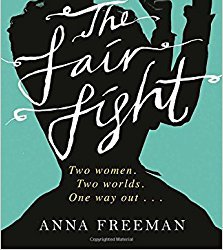
In February I went to Mexico for a short work-cation, and took Anna Freeman’s completely badass Fair Fight as well as some non-fiction, which didn’t last me very long. Luckily the hostel bookshelves contained Julia Alvarez’s fantastic and touching How The Garcia Girls Lost Their Accents, as well as a relatively new copy of Wuthering Heights, which I had never read. It was so miserable I was actually pretty happy to get back to Villette as part of a long overdue group read - which of course ended up being both awesome and frustrating. After this I landed on Age of Innocence by Edith Wharton, I think as part of that group’s discussions. Definitely less frustrating and vastly funnier. Oh yeah and I read North & South entirely on my phone from Project Gutenberg, staying up late and giggling into the covers - admittedly after I watched the adaptation on Netflix.
I would've watched North & South a long time ago if someone had told me it was about union organizing
— ҩȴȴҩηҩ (@allanaaaaaaa) August 16, 2017
Two books left me completely heartbroken and sobbing this year: Yaa Gyasi’s Homegoing and Katherena Vermette���s The Break. Between the two of them you have American and Canadian injustice pretty well cornered. Can I admit that while reading Colson Whitehead’s Underground Railroad I spent a lot of time thinking about going back and reading Homegoing again? I’m not trying to pit them against each other or anything, just, if you liked the former you should definitely definitely read the latter.
I was telling my boss about something I was reading, although now I can’t remember what it was, and she recommended to me Susan Orleans’ Orchid Thief, which I know, I know, and I had never actually made it through Adaptation before either, but the book of course was totally great.
In sci-fi, I read the followup to The Girl With All The Gifts, The Boy On The Bridge and maybe cried a little. I thoroughly enjoyed the series by Ann Leckie - Ancillary Justice, Ancillary Mercy, Ancillary Sword. At the end of the year I dipped back in for Provenance. I’ll mention Ted Chiang’s Arrival, too, although only some of the stories were interesting to me.

In post-apocalypse, there was Good Morning, Midnight, which was recommended to me as “Station Eleven-ish” and I mean it kinda was, but a little slower-paced and meditative and left just the right amount of information out. I read The Leftovers by Tom Perotta and found it fantastic. I also read Jean Hegland’s Into The Forest after finding out it was going to be a movie (this is admittedly a trend for me) and holy hell I did not at all expect the way the last few chapters panned out. Not even a little bit.
In fantasy, we found a copy of Patrick Rothfuss’s Wise Man’s Fear in a neighbourhood book exchange so I got Name Of The Wind from the library and read both of them in a very quick flash. Really wonderful world.
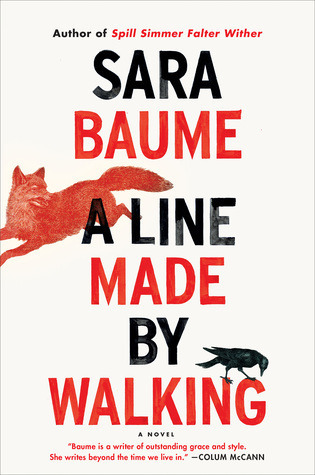
In art writing, I probably most enjoyed Barbara Shapiro’s Art Forger, although I most identified with Sara Baume’s Line Made By Walking. Like, a bit too much. I also really liked Andrew O’Hagan’s The Illuminations after I became short-term obsessed with Margaret Watkins, although it was hard to get into.
Also it occurs to me upon reflection that I never actually finished Anthony Doerr’s All The Light We Cannot See, even though it is a lovely book. I think I maxed out my tolerance for WWII depictions this year, for some strange unknowable reason.

I am way too lazy to do a non-fiction list, again, but that’s okay because this year I mostly just read trashy art-crime books:
Priceless by Robert Wittman
The Gardner Heist by Ulrich Boser
Provenance by Laney Salisbury
The Forger's Spell by Edward Dolnick
Seduced by Modernity: The Photography of Margaret Watkins, by Mary Elizabeth O'Connor
The Lost Painting by Johnathan Harr
… as well as Lab Girl by Hope Jahren, and the Josephine Baker graphic novel, the two most worth mentioning.
3 notes
·
View notes
Photo
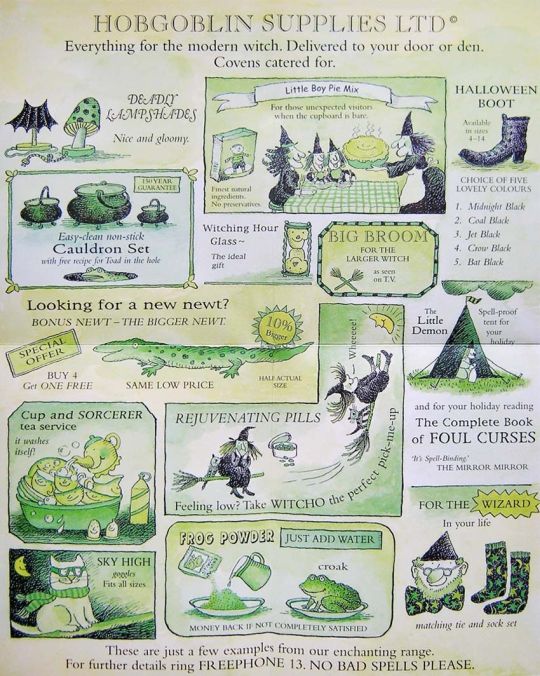
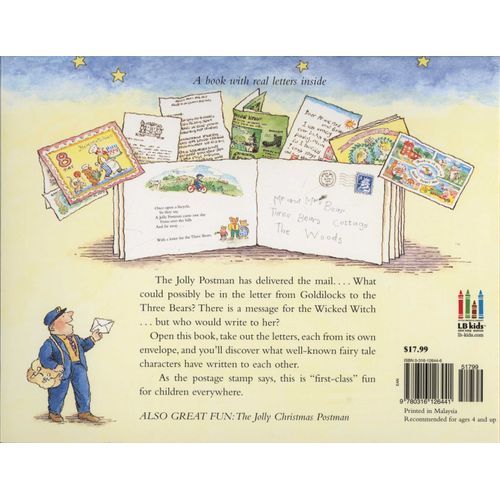
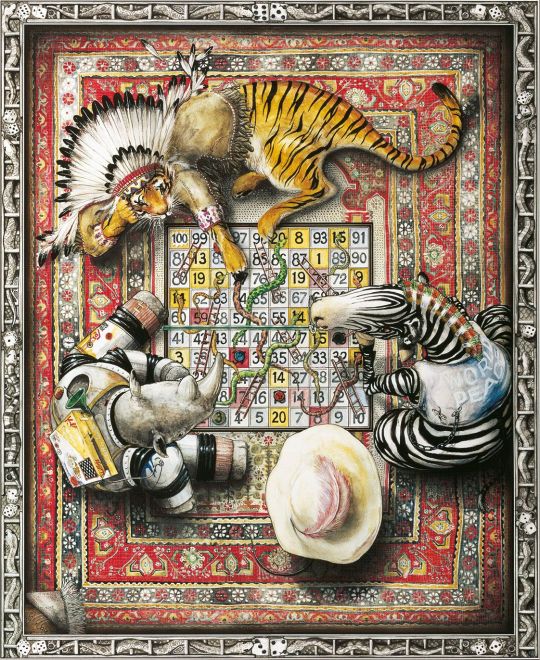
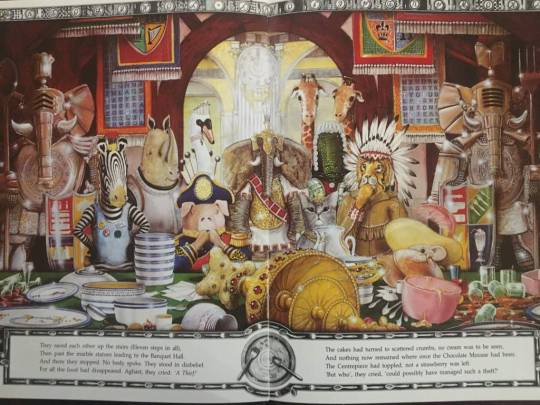
Here's the artist statement and 2020 biography-blurb I wrote to accompany 8 collage poems (including an Inktober painting of Louise Brooks/poem about bobbed hair vie, and a LiveJournal poetic autobio. duo). With deep gratitude to editor, James Diaz.
http://heroinchic.weebly.com/blog/featured-poet-artist-jojo-lazar
TWO OF MY FAVORITE kid books growing up were "The Jolly Postman (or Other People's Letters)" and "The Eleventh Hour: A Curious Mystery," (a picture book with the equiv' scandalous feel of Clue), and I started writing poetry at eleven. It feels inevitable that several decades later my 'collage oracle leaves' have absorbed the sense of 'found' artifact, voyeurism, empathy - an art-puzzle, overheard partial narrative in a swirl of glamor.
I've made near a (couple) thousand collage poems in the last six years, their increasing high-tincture feel has lead me to describe them as: overhearing seance/spiritualism transcriptions, experiencing crossed telephone wires, a radio playing on station search/scan, love letters from strangers, and snatches of ghosts' conversation from an Edith Wharton novel overheard through a parlour wall.
The work presents as a puzzle-gift, but I hope for the immediacy/transmission of a tarot card spread. Though references and metaphor can be unlocked, I aim for the work to be enjoyed viscerally when still a psychedelic mystery. A padlock beautiful when shut as much as an utterly different treasure once open to the reader's translation.
By this found or drag/masque voice format of Omniscient Acceptable Narrator I am able to be (infinitely) more than I am often read in the flesh. As I'm "only" doing "cut-ups" how much can I be held responsible for extreme libertine hippy things, radical empathy, feminist fencing, mysticism, depression, and satirizing while butchering-quoting others in the dada tradition?
After years of this collage-process my transcription voice has gotten creepier! Yet closer in a soul-sense to what I could call my 'free hand personal narrative' poetry. There's also a tension the closer the typed-up work gets to sounding how I chat naturally with my closest, which we call "poet mouth." Parameters can set you free to be who you have always been. ("Man is least himself when he talks in his own person. Give him a mask, and he will tell you the truth." - Oscar Wilde) I am inadvertently on the Shakespearean arc from artifice to authenticity with the collage journey I re-realize as I write this. So I will probably divide my upcoming poetry manuscript to reflect that in two parts, "Inapproetry / Collage Oracle Leaves."
These poems are part of a print collection coming out this spring, "I Still Witch: Collage Poetry, Erasure Art, and Nonfiction." The book is a collab' with Oilcan Press and my band's imprint, WIREFOREST. It's a supreme honor to preview the work and share the book news here on Anti-Heroin Chic. Deep gratitude to James.
-jojo Lazar (February 19, 2020) .
jojo Lazar is a Boston based multi-genre vaudevillian artist. She is a multi-instrumentalist in qweirdo art rock band 'Walter Sickert & the Army of Broken Toys,' and has a crypt folk duo, 'Death and the Poetess.' She teaches ukulele, creative writing, and zine-making and holds a BA from Brandeis and an MFA in poetry from Lesley University. Her paintings and poetry have been published in A Bad Penny Review, Connotation Press, Zen Monster, For Sale, Delirious Hem, Faggot Dinosaur, her own zines and others'. (jojoLazar.com)
You can find paintings, blackout poetry, and collages at @poetessS on social media. And free-to-stream music via ArmyofToys.com, Spotify, and http://deathandthepoetess.bandcamp.com
#personal essay#artist statement#lyric essay#anti-heroin chic#poet life#the jolly postman#the eleventh hour#root causes#press
0 notes
Text
Copyright just lifted on lots of neat stuff
Works from 1923 have entered the public domain after a 20-year extension on copyright protections.
The Penn Libraries, which hold more than 9,000 works from 1923, have embarked on a year-long project to digitize and share selected books through a partnership with the HathiTrust, an online collection of millions of titles from libraries around the world freely available to the public.
University of Pennsylvania experts in libraries, media, law, and business applauded the release of creative works from copyright protection on January 1, allowing people to reprint and reimagine books, poems, films, music, photographs, and other creative works without permission or fear of copyright infringement.
“It’s inspiring as a librarian to take works that have been hidden in our collections and open them up now, not just to the Penn community, but to the world. That’s incredibly exciting,” says Brigitte Burris, assistant university librarian for collections.
“I can guarantee that nobody was reading obscure works in our collection from 1923 about prohibition, but now they’re out there, able to be Googled, able to be found,” she continues.
Texts such as Alcohol and Prohibition in their relation to Civilization and the Art of Living might be interesting to researchers today, Burris speculates. Another book the Libraries digitized is Vinzi, a Story of the Swiss Alps, by Johanna Spyri, known for Heidi, which people can now reprint, reuse, and reimagine.
Many well-known works that have just come into the public domain include the poetry collection New Hampshire by Robert Frost, which includes “Stopping by Woods on a Snowy Evening.” Other works include the novel Tarzan and the Golden Lion by Edgar Rice Burroughs, the song “Yes! We Have No Bananas,” the film Safety Last! starring Harold Lloyd, along with other notable plays, music, photographs, and more.
‘They now belong to everyone’
“It is a major event,” says Peter Decherney, director of Penn’s Cinema and Media Studies program, English professor, and author of the book Hollywood’s Copyright Wars: from Edison to the Internet (Columbia University Press, 2013). “They now belong to everyone. They can be distributed inexpensively, but they can also be reworked and adapted in different ways.”
Studies show that most works have little or no commercial value only a year after being published, says Decherney.
“The longer works stay privately held, the longer it takes society to reap the full benefits from the works,” he says. “They may have more commercial value as people access them and reuse them and make inexpensive publications of books or recordings of songs.”
The ‘Mickey Mouse Protection Act’
Congress determines copyright terms, which have been changed many times over the years. The 20-year hiatus was due to what is nicknamed the “Mickey Mouse Protection Act,” a 1998 law that extended copyright terms by 20 years, and was lobbied for heavily by The Walt Disney Company. Congress mandated that all works published after 1922 were subject to a 70-year period of copyright protection after the author’s death, or 95 years after publication in the case of works made for an employer. There are other terms depending on various factors as well as exceptions to all of those rules.
“It is complicated. We’ve spent two hours on duration in my copyright class,” says Penn Law professor Shyamkrishna Balganesh.
Copyrights were always meant to expire, Balganesh says.
“That’s how the Constitution states ‘limited times.’ Article 1, Section 8, Clause 8, empowers Congress to pass copyright laws. But in doing so, it states very clearly that it has to be for limited times,” Balganesh says. “Copyright must end on works: This was always the design.”
Balganesh says that although Congress could extend copyright protection again, he does not believe lawmakers will do so because the public mindset has changed over the past two decades.
“Most people today see copyright as being overprotective,” Balganesh says, calling the issue “politically volatile” and unlikely to be tackled. “For Congress to intervene in this climate and extend copyright retroactively for another 20 years would not go down well.”
In addition, technological advances and the internet have radically changed the landscape by providing many more ways to create and distribute works. “I’d be surprised if you could put the genie back in the bottle,” Decherney says. “Anyone can start a YouTube channel and put out content. The realm of creators has grown exponentially.”
In short, the consumer benefits, says Balganesh. Although original and unrevised editions might increase in price, he notes that, “While access goes up, and prices go down. Publishers will adapt to the marketplace.”
Yoram Wind, professor emeritus of marketing, agrees, but says that there is some worry by companies and estates about potential abuses in addition to lost income.
“There is less control on quality and integrity of the work,” he says. “It is providing people new material and creativity, which is positive. One big question is to what extent it will be abused, and that’s something we don’t know.”
What else is now free from copyright?
The Center for the Study of the Public Domain at Duke University published a list of notable works from 1923, including books, films, and music. An estimated 50,000 printed works came into the public domain from 1923 through HathiTrust alone.
John Mark Ockerbloom, the Penn Libraries’ digital library strategist who works with metadata, writes a popular blog, “Everybody’s Libraries.” In December he wrote daily posts highlighting particular items of interest from 1923, including books by Agatha Christie, Edith Wharton, P.G. Wodehouse, Virginia Woolf, Joseph Conrad, A.A. Milne, and Zane Grey. The first on the list was The Prophet, a collection of prose fables by Lebanese-American poet Kahlil Gibran and one of the most translated works in the world.
The Libraries is focusing its digitization efforts on those that are not yet in the HathiTrust collection. So far, the Libraries has 800 of its books from 1923 digitized in the HathiTrust, and expects to digitize many more, says Burris, who oversees the general collection.
“The project closely aligns with the true mission of a research library, which is to make intellectual content available to the world as openly as possible,” Burris says. For now, Burris says that the effort will focus on printed materials as that is the strength of the collection from that period.
“I’m eager to see what will come out of what is open to the world now,” Burris says. “It’s exciting to think about all the forms this new content is going to take.”
Source: Penn
The post Copyright just lifted on lots of neat stuff appeared first on Futurity.
Copyright just lifted on lots of neat stuff published first on https://triviaqaweb.weebly.com/
0 notes
Text
Why I’m only reading books by women this year

My bookcase in my bedroom in my childhood home is bursting full of books that have shaped my education and, come to think of it, my entire life to date.
During a recent visit home, I observed that the overwhelming majority of these books — many of which were prescribed texts during my sixth form studies and my literature degree — are authored by men.
SEE ALSO: Snobbery about romcoms goes all the way back to the 1930s
However, among those books gathering dust, the most dog-eared, well-thumbed ones were written by women. These books were old friends I'd revisit time and again throughout my teens and twenties. Their authors: Virginia Woolf, George Eliot (AKA Mary Anne Evans), the Brontë sisters, Mary Shelley, Margaret Atwood, Edith Wharton, Maya Angelou, Iris Murdoch, Sylvia Plath, Joan Didion, to name a few.
But, after studying English literature at university, something turned me off reading for many years. The vast majority of books I read during my studies were penned by male authors, and more often than not, they told stories about male characters. I was hungry for a woman's voice, for a story that resembled my own life, for pages that read like the inside of my mind. But, my university studies didn't provide the nourishment I so desperately craved. Fast forward a few years and I had pretty much stopped reading altogether. "You don't read," my best friend said to me last year. How had I, a former bookworm, become so far removed from something that defined the first 20 years of my life? I didn't know how to rekindle my romance with reading.
But, something happened earlier this year that changed everything for me. During a lunch break in early March, I wandered over to a pop-up bookshop called Like A Woman in east London which was only stocking titles penned by women. The shop was set up by publishing house Penguin Books to coincide with International Women's Day — but it was during an interview with its creator that I realised that this wasn't just yet another stunt by a brand. Zainab Juma, creative manager at Penguin and the creator of the bookshop, told me that female authors account for a huge swath of literary fiction's commercial success, but they're grossly undervalued when it comes to awards. "The majority of the bestsellers on the literary fiction list last year were written by women, but out of the 114 Nobel Prize laureates, there have only been 14 women. Fourteen out of 114, that's bonkers," Juma told me. "Women make an awful lot of contribution without necessarily the recognition that goes with it."
Prizes aside, research has found that books by male authors are more likely to be reviewed by critics at esteemed literary publications like the New York Review of Books and the Times Literary Supplement. British-American novelist Nicola Griffith analysed 15 years of literary fiction awards including the Man Booker Prize, the Pulitzer Prize, among others, to look at the gender breakdown of winners. The results showed that between 2000 and 2015 "not a single book-length work from a woman’s perspective or about a woman was considered worthy" of a Pulitzer Prize. "Even when women win prizes, it is generally for novels about men," Griffith told me over email. "So do we see much progress in terms of more novels about women winning prestigious literary prizes? Perhaps a little, but not much. Not nearly enough."
Incidentally, women also account for two thirds of those buying novels in Britain, but male authors and narratives still dominate literary criticism. So, who's responsible for the cultural devaluing of women in publishing — an industry where women dominated the bestsellers list in 2017. Griffith believes that gender bias in education is to blame.
"If I had to point at a single culprit, I'd say education. That is, the standardisation of syllabi, and therefore canon/s," says Griffith. "If we grow up reading and being examined on books by and about men, and if we watch film and TV by and about men, how can we avoid internalising the understanding that women are less interesting and prize-worthy than men?"
"Prize jurors are people, products of our culture. Women and men on prize juries often genuinely believe they are choosing the objectively best book. The problem is that we all grow up being taught that 'best' = male," she adds.
In 2017, a mere 30 percent of set texts prescribed by GCSE specifications are books written by women. These shocking statistics have sparked petitions and campaigns for more female representation in school syllabi — curricula which inevitably shape students' perceptions of what is considered the very best literature.
We, as readers and writers, are not necessarily in control of what educators choose to include in syllabi, but there are some things that we can do to affect change. "What *readers* can do is easy: buy books about women, read them, and talk about them," says Griffith.
Griffith wrote a response to the 1983 book by Joanna Russ How to Suppress Women's Writing outlining what we as readers can do to make women's writing more visible and more culturally appreciated. "The single most important thing we (readers, writers, journalists, critics, publishers, editors, etc.) can do to improve the visibility of books by and about women, and to secure that visibility for the future, is talk about them whenever we talk about books," writes Griffith. "And if we honestly can’t think of books by and about women 'good enough' to match those about men then we should wonder aloud (or in print) why that is so."
After visiting that book shop the day before International Women's Day, I made a pledge of my own. For the next year I would only read books by women, about women. There began a journey of rediscovery of my love of reading, of returning to the thing I used to love more than anything else. Of course, I'm not advocating feminist separatism here or permanently entering into another echo chamber. For me, this is more about redressing a historic imbalance in the books I've been taught to value since my education began. It's a recalibration.
Since making that decision, I've read so many books that made me want to shout about them from the rooftops.
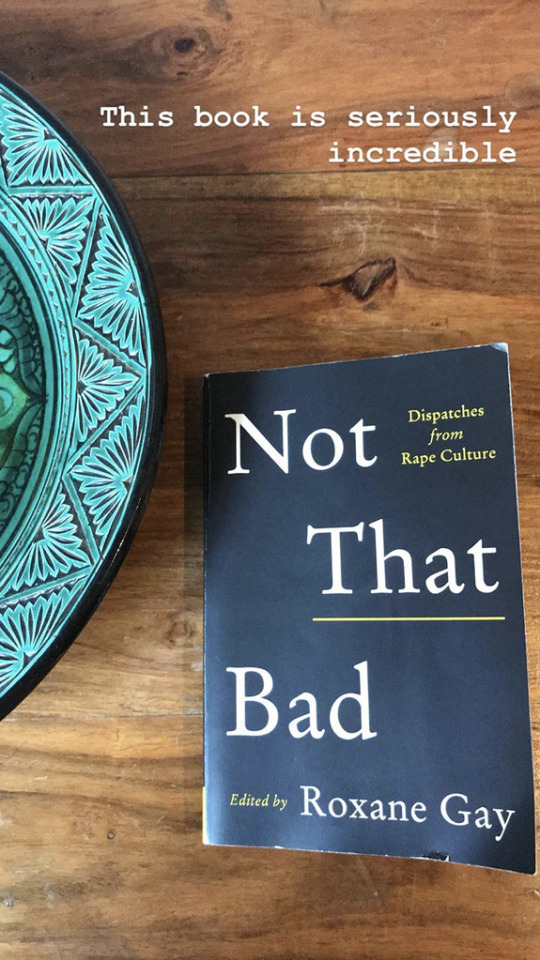
Image: rachel thompson

Image: rachel thompson
The first book I read was Joan Didion's The Year of Magical Thinking, an account of the year following the author's sudden death and a touching reflection on the reality of grieving for a loved one. Next up was Everything I Know About Love by Dolly Alderton, a beautifully relatable memoir about navigating relationships in one's twenties. Continuing in my theme of devouring books of essays, I read Look Alive Out There by Sloane Crosley, who's one of my absolute favourite writers.
Next up was Not That Bad: Dispatches from Rape Culture by Roxane Gay, a necessary text to emerge in the post-#MeToo landscape. Then I read The Rules Do Not Apply by Ariel Levy, a book that was infused with so much raw emotion I found myself welling up on the Tube. On holiday in France I read The Pisces, which was a fast and fun summer read (who doesn't love a bit of merman erotica?). As I fell back in love with reading, I noticed that I no longer viewed reading as a chore, as something I didn't have time for. I now read whenever and wherever I — in bars, on public transport, in bed, in the breakout space at work.

Image: rachel thompson

Image: rachel thompson
I milled through Florida and Fates and Furies by Lauren Groff. I read My Year of Rest and Relaxation by Ottessa Moshfegh and loved it so much I instantly bought her previous book, Eileen. I read Heartburn by Nora Ephron and adored every page.
Then I read What a Time to Be Alone by Chidera Eggerue, She Must Be Mad by Charly Cox, The Female Persuasion by Meg Wolitzer. The next book was perhaps my favourite one I've read in years. A book that felt like I was reading my life on a page, my innermost thoughts spelled out in letters — Normal People by Sally Rooney. Not for a long time have I read such realistic renderings of the intricacies of human emotions and relationships. I followed that immediately with Rooney's brilliant debut novel Conversations With Friends.
As summer turned to autumn I sped-read Crudo by Olivia Laing, then moved to the dark The Mars Room by Rachel Kushner, and The Cost of Living by Deborah Levy. The latter book of essays was a beautifully written rumination on what it means to be a writer and a woman. I'm now reading Putney by Sofka Zinovieff and am finding it gripping and disturbing in equal measure.

Image: rachel thompson
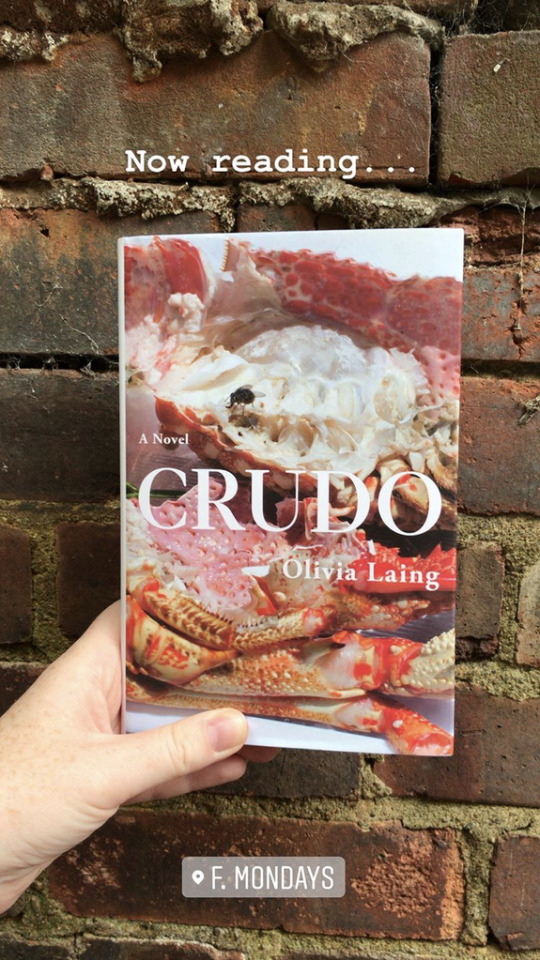
Image: rachel thompson
I'm not alone in my mission to read only women writers this year. Some are choosing to read books by women of colour. Jalisa Whitley, founder of equality organisation Unbound Impact, told me she decided to only read books by women of colour this year "because we're often not discussed in the 'must read' books lists."
"Looking at my own Goodreads list I realised how male-dominated it was and wondered how that framed the way I saw the world," she says. "I wanted to widen my frame of reference and expose myself to different types of stories that centre the experiences of women in ways that are layered, complicated, and represent the many ways we show up in the world including but not limited to our roles as wives, mothers, and love interests."
Whitley says she reached out to people on Twitter for ideas of what to read and she ended up getting hundreds of book recommendations. "I could literally just read women of colour for the next five years," she says. "I've been exposed to AMAZING books including: When They Call You a Terrorist by Patrisse Khan Cullors, Emergent Strategy by Adrienne Maree Brown, Half of a Yellow Sun by Chimamanda Ngozi Adichie, My Mother Was A Freedom Fighter by Aja Monet, An American Marriage and Silver Sparrow by Tayari Jones, The Book of Unknown Americans by Cristina Henriquez, In the Country by Mia Alvar and so many more." She says that in this political moment these books have afforded her "community" and "comfort" as well as making her laugh, cry, and "re-energised for the resistance."
What are your favorite books by women of color? Need some fire recommendations to round out my goal of reading 50 books only by women of color this year. Bonus pts for international writers #wellreadblackgirl
— Jalisa Whitley (@JalisaNichole) August 12, 2018
I, too, share this feeling of re-energisation. I will forever be grateful that I chose to go on a walk that lunchtime in March. And I'm glad that I got to meet Zainab Juma, whose insights prompted me to question the types of books society tells us are more worthy of our attention.
Ultimately, this has been, and continues to be, a lesson in exercising choice over the pages I put in front of my face. What we're told to read by our teachers, professors, literary critics, and even our friends are not necessarily definitively the best. If we amplify the voices of women writers through reading them, sharing them on social media, and recommending them to people in our lives, we remind readers that women's writing is essential.
WATCH: Boston Dynamics 'parkour' robot took more than 20 attempts to nail it

#_uuid:be772424-c4eb-367a-8a47-ed50bcc6e655#_author:Rachel Thompson#_category:yct:001000002#_lmsid:a0Vd000000DTrEpEAL#_revsp:news.mashable
0 notes
Text
Life in a Victorian Country House. Hampton Court and the Arkwright family.
THE TRUE VICTORIAN HISTORY OF HEREFORDSHIRE'S HAMPTON COURT...
Source; http://virtualvictorian.blogspot.com/2012/09/the-true-victorian-history-of.html
This site is a must for anyone interested in the Victorian era, a huge range of resources are available.
Author; Catherine Beale is the author of Champagne & Shambles – Crisis at the Country House (The History Press, 2009). Her website is at www.cbeale.co.uk. Hampton Court’s website with opening times is at http://www.hamptoncourt.org.uk/
If you want to read much more; https://www.amazon.co.uk/Champagne-Shambles-CatherineBeale/dp/0752454358/ref=sr_1_1?ie=UTF8&qid=1532364998&sr=8-1&keywords=catherine+beale
Another wonderful read. The writing is so vivid you will find yourself at Hampton Court.
My only tenuous link to Hampton Court is that my father was employed to redecorate some rooms in the 1960s. He brought home a small piece of the material to be pasted onto the walls. It could not be called wallpaper, it was cloth with a rich a velvet surface.
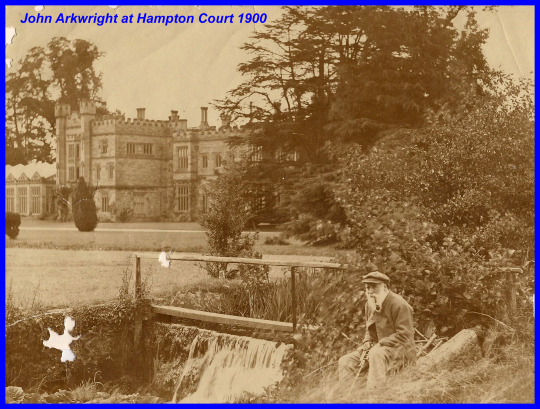
I have included my own images dating from the period Catherine writes about. They were given to me by my wife’s grandmother, Nan Nan Helme who was living at Wharton Court, the family home, a short distance away in the 1960s.
DINWOOD DISCOVERED
POST BY CATHERINE BEALE
I’ve been up close with a serial seductress for about twenty years now. She broods. Like the moody lead in a French film - as they would say, “elle boude”. She appears cold, is hollow-hearted and made of stone. Yet to many men, she’s been ruinously irresistible. She’s pushed them away as she’s drawn them in, then emptied their pockets and sent them packing. She’s called Hampton Court, Herefordshire, and was the inspiration for Dinwood Court in Essie Fox’s Somnambulist.
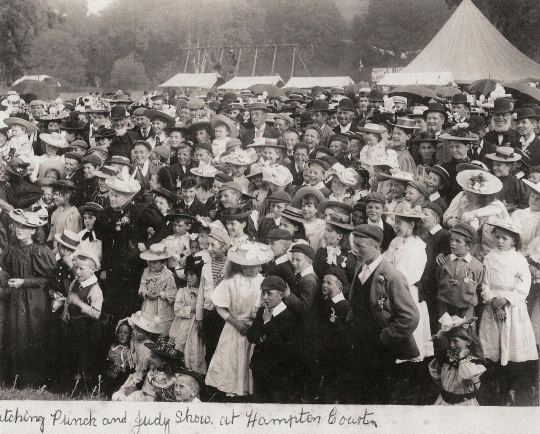
Essie and I, like many others, grew up passing this fifteenth-century fortified manor house to which there is easy visual access from the A417 between Leominster and Hereford. Unlike other country houses, Hampton Court is not secluded beyond an Austenian serpentine mile-long sweep. Until the introduction of a gate-house and tree-planting in the 1990s, the house was baldly visible to all-comers, set back from the side of the road, up a ramrod-straight drive. This involuntary exposure forms part of her charm. It makes her vulnerable – ‘all Danaë to the stars’.
To me she lies on her right side, propped up on one elbow on nature’s chaise-longue, the fertile River Lugg meadows backed by the thickly-wooded slopes of Dinmore Hill. The combined backdrop of low-hanging trees and our view of the north front make the house appear dismal and damp, an impression not helped by small windows and ageing stone. Only her eyes, the leaded panes of the chapel, hint at the spark beyond.

THIS IMAGE SHOWS THE HAMPTON COURT GAMEKEEPER VISITING LEOMINSTER.
Little boys, young and old alike, see serried battlements on which they yearn to play knights and archers. The central tower and great gate to which the umbilical drive leads are those of the fantasy castle, repelling all-comers while protecting those within. The cross-loops or arrow slits conceal a wily Cupid and contribute to the romance. I suspect that the flag-pole that tops the tower casts the final spell. You have to get inside, no matter what. Better still, to possess her.
When we were little girls, the allure was ripened by the fact that curiosity teased you in but private ownership kept you out. The gardens didn’t open to the public until 2000; the house in 2008. I began to research the history of the Arkwright family, the Victorian occupants, back in the early 1990s.
Hampton Court cast her spell on John Arkwright (1785-1858) grandson of the cotton-spinning industrialist Sir Richard Arkwright (1732-92) in the early nineteenth century. Her Picturesque setting was the contemporary ideal and she lay between the estates of the two fathers of the landscape movement, Uvedale Price of Foxley, Herefordshire and RA Knight of Downton, Shropshire. John asked his father for permission to come and live here in 1814 explaining that ‘of all the situations I know, there is none which suits my tastes so well as Hampton Court’. John spent around £46,000 in the 1830s and ‘40s converting the medieval manor house into a Victorian home, and by the end of it wished that ‘he had never touched a stone’.
John and his wife Sarah raised a dozen children at Hampton Court. They filled the house with noise and activity. John’s greatest delight was to get them all on horseback for a tour of the estate. A favourite ride was to the Humber Falls on the brook across the road from the house.
Here, the crashing of water over rocks made a thrilling destination, besides creating the ideal habitat for the ferns so popular at the time. The element of danger was as exciting to the Arkwright girls as it was terrifying to Phoebe Turner, for whom ‘falls’ in Essie’s novel becomes a cruelly accurate description of the location that surely inspired a crucial scene.
John’s son, Johnny Arkwright (1833-1905) lived his whole life here, came into his inheritance aged twenty-four and increased the estate to over 10,500 acres. He was a golden child, noted at Eton for ‘a disposition to noisiness’. He sunk punts at Oxford and was wildly popular, dispatched boxes of roses to his bride ‘and kissed every flower’. Yet Johnny was of that unfortunate generation of late-Victorian owners that, despite doing everything right – investing in the estate, taking a lead in the county, playing his part in London – saw the world change irrevocably for its kind. By the time of Johnny’s death, some of the farms were mortgaged and his son had to offer Hampton Court for sale five years after his death.
The Arkwrights sold Hampton Court to Nancy Burrell in 1912, and during the First World War the house became a Red Cross hospital. Mrs Burrell’s husband died during the war and she was obliged to sell in 1924. She had lost a baby son and poignantly kept his ashes beneath the altar in the chapel, only scattering them when she left Hampton Court – an incident that perhaps inspired the novel’s inclusion of a child’s grave in the woods.
The Devereux family owned Hampton Court from 1924 until 1972, when the eighteenth Viscount Hereford and his wife forsook the life of the country estate, downsized and sold the lot in one of the legendary house sales of the period. Since then, Hampton Court has been bought and sold more times than in the previous 550 years put together. Each time, as funds ran out, more of her original contents were sold to try to stave off ruin, but still the rain seeped in through the leads.
Her knight on a white charger rode in in 1994. American former financier Robert Van Kampen had fallen in love with Hampton Court from afar. He saw her in a video but on enquiry, was told that he was too late, she had already been sold. He visited the UK with his wife on holiday. They pulled up at the end of the drive. Judith Van Kampen spoke of seeing her husband’s shoulders sink as he realised what he had lost. Undaunted they drove up, while surveyors pushed measuring wheels about and sized the old girl up.
They were welcomed inside by the vendor’s wife, who was still awaiting payment. Her husband was summoned from ‘Manchester or Birmingham or one of your cities’, while the Americans took tea. Within half an hour of negotiations, the deal was done. In the ensuing six years, Hampton Court got a new roof, was re-plumbed, rewired and heated throughout. She twinkled again. She dabbled her toes in new gardens commissioned by the Van Kampens from David Wheeler and Simon Dorrell. Joseph Paxton’s Victorian conservatory became a tea room.
Many thousands paid to get in and see the gardens. And what of the curve of Hampton Court’s back, coyly kept from view for so long? It was as dazzling as it was unexpected. Trapped between the house and the hill the sun seems to smile relentlessly down on a private playground, creating a particular paradise. In stark contrast with the public front, the stones seem to radiate warmth, making you inhale, as if to catch her scent. Broad windows glint in the sun and the music room doors are thrown open. Danaë has her back to Zeus and almost wriggles in the heat. She mocks our astonishment. Listen carefully and you might hear the river – or was it a laugh?
0 notes